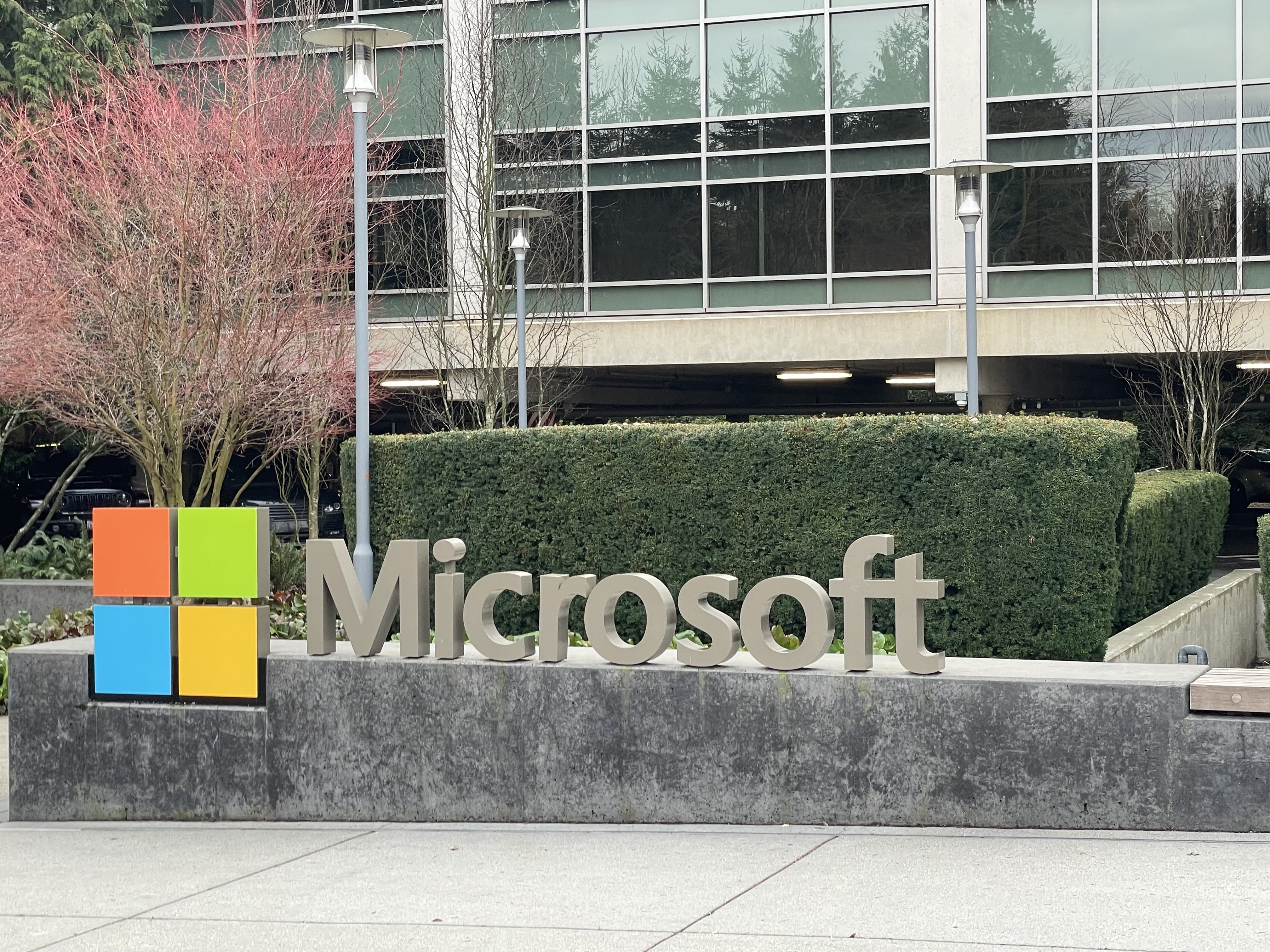
Arrived at the Microsoft Headquarters. My goal was to view the visitor center and learn more about the identity of the company and their globe-spanning software and systems. I went to Redmond, and immediately noticed that the computational nature of the place was evident even in the street names:
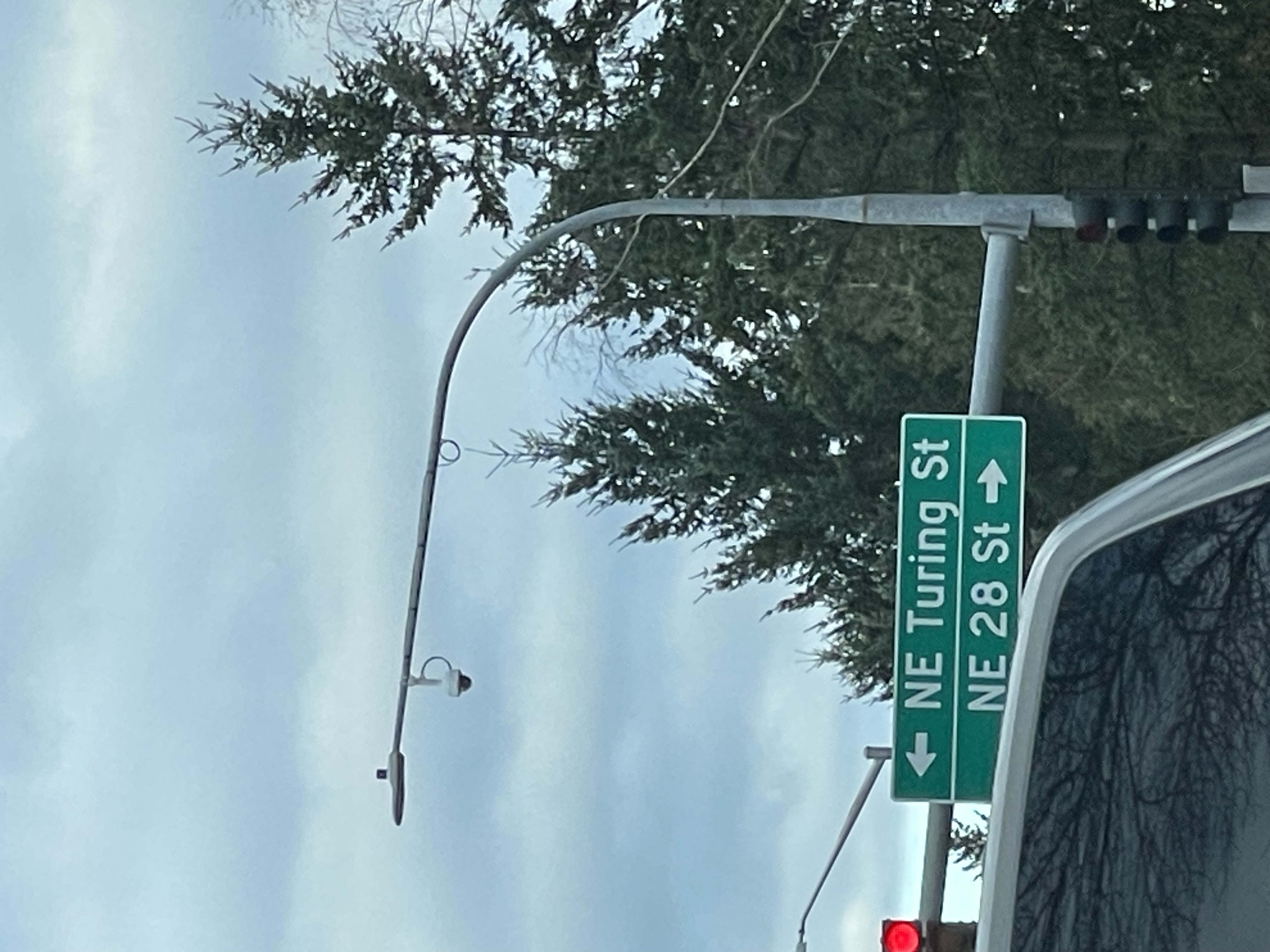
Unlike Amazon, Microsoft’s buildings were lower and in a corporate park infused with Pacific Northwest nature. Everywhere I looked there were local trees and plants, giving it a feeling of a global behemoth situated, very situated, within the local ecology and local sense of place. Even the buildings gave off warm natural tones and a sense of connectedness to its surroundings. This was very different than the stark black and blue glassy buildings of Amazon’s campus.
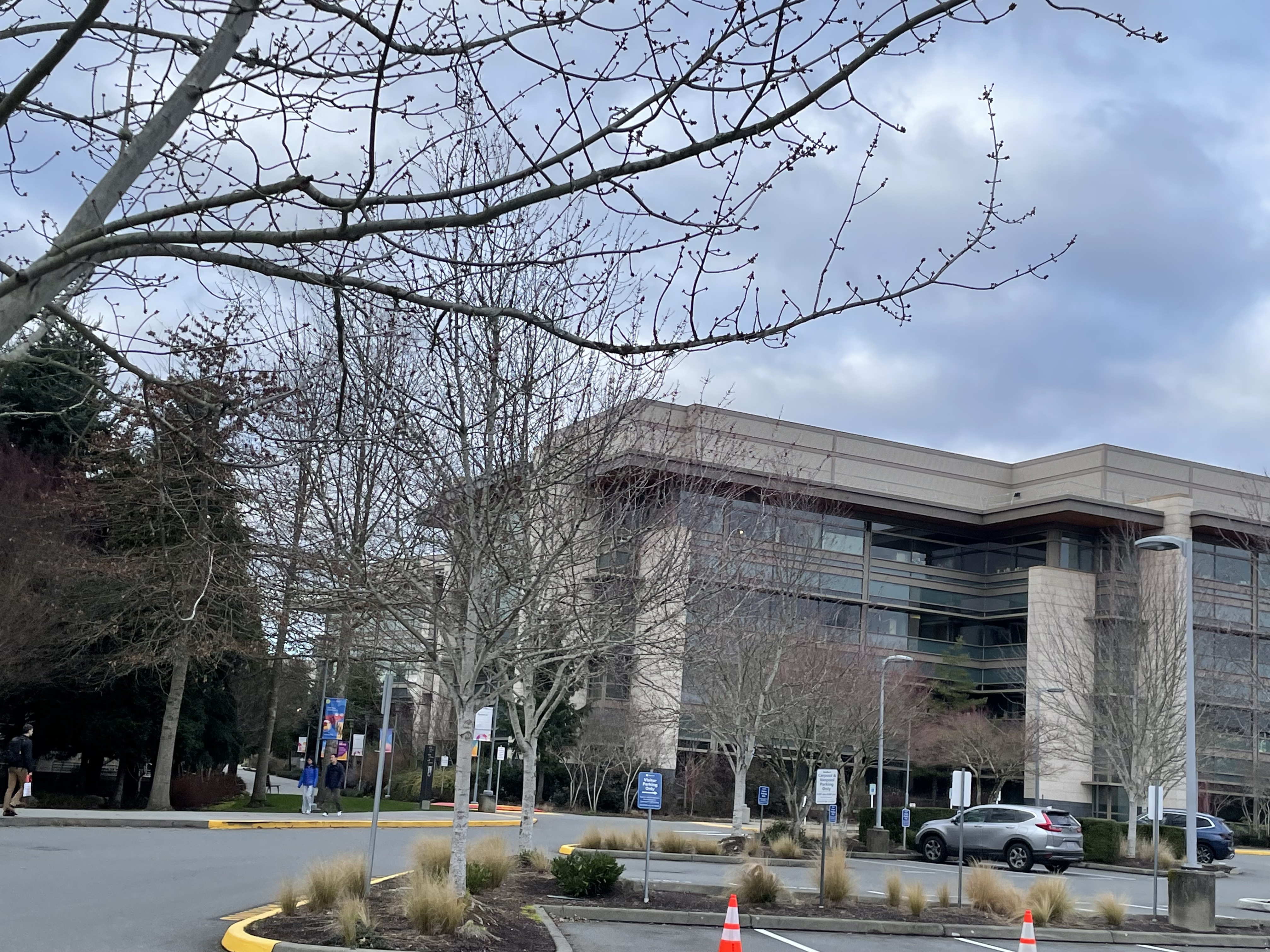
As I approached, I started to notice other features of the campus, like the visitors in business casual attire that were also headed in to see the Visitors Center. I also noticed a bus—surely needed to get around the vast expanse of the campus.
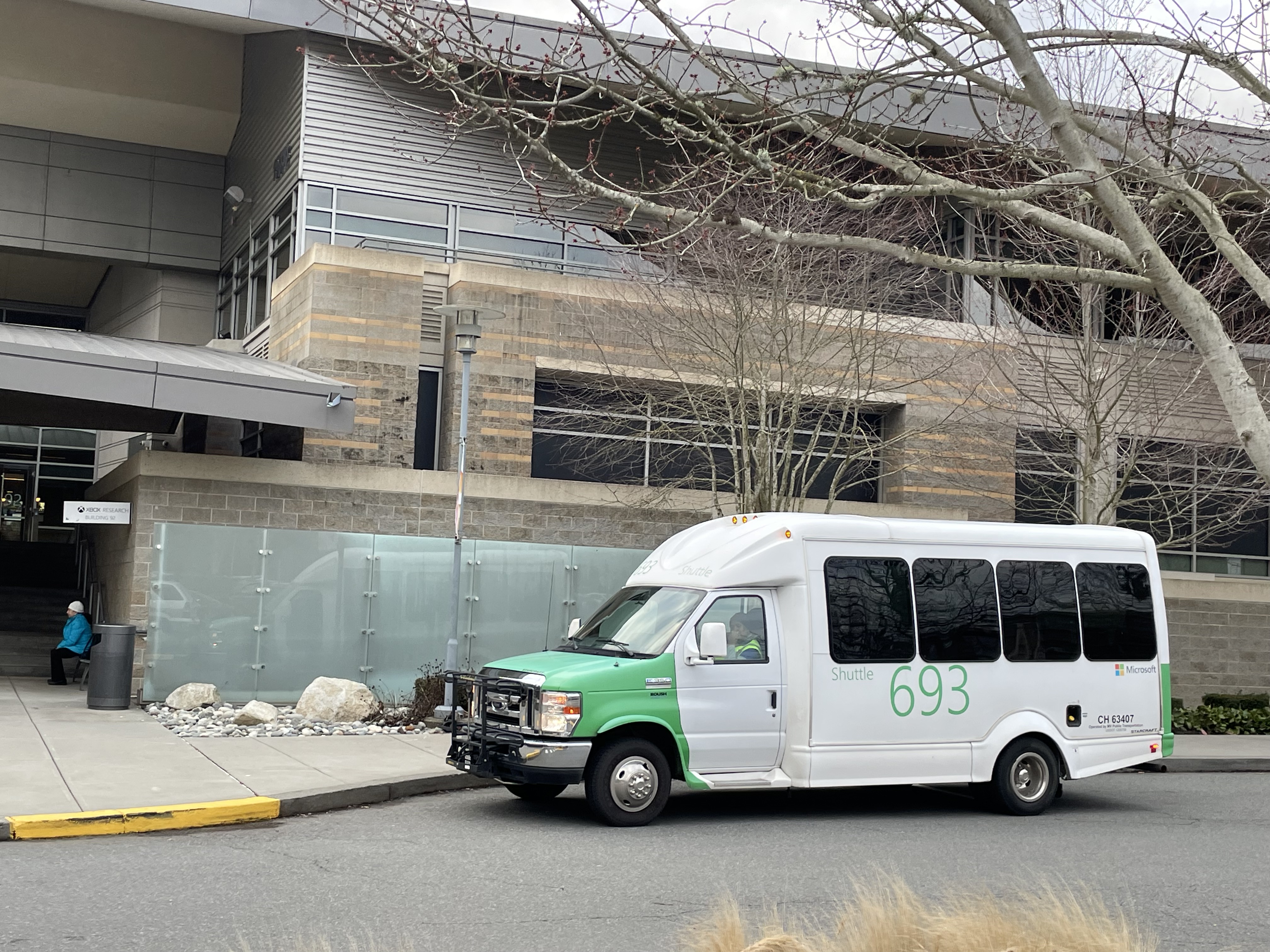

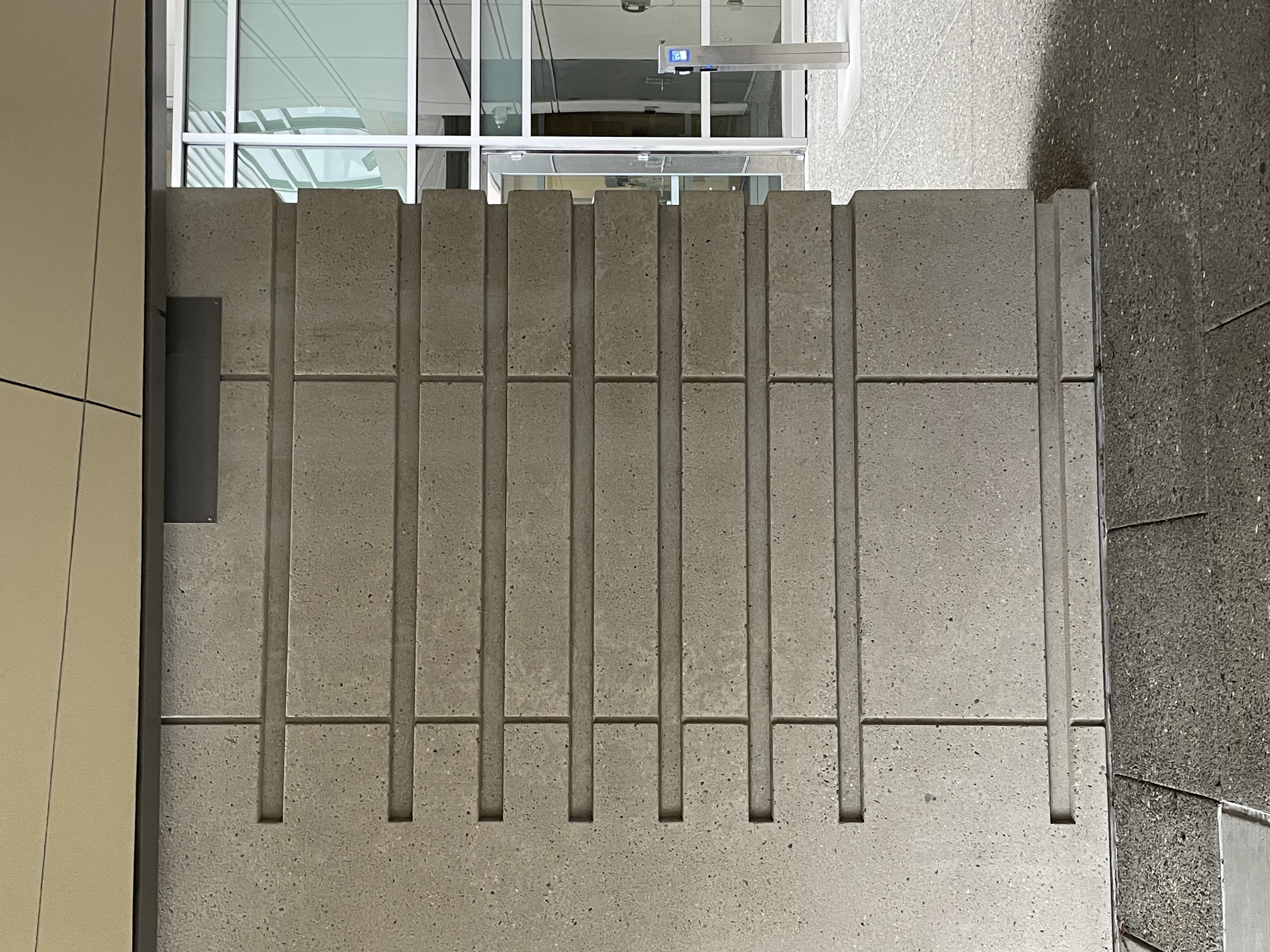
The pillars of the building were etched to have a circuit-like quality to them. It gave a sense of robust-futurism. Here is an institution and buliding meant to last, and the strength of the business reflected in the strength of these large concrete pillars.
Entering the building I was greeted by a friendly receptionist. They told me I didn’t need to validate my parking. It was clear the building was divided into two spaces: that for the general public with the visitors center and the Microsoft store and the areas for employees, locked away behind key card access.
Entering the Visitors Center:
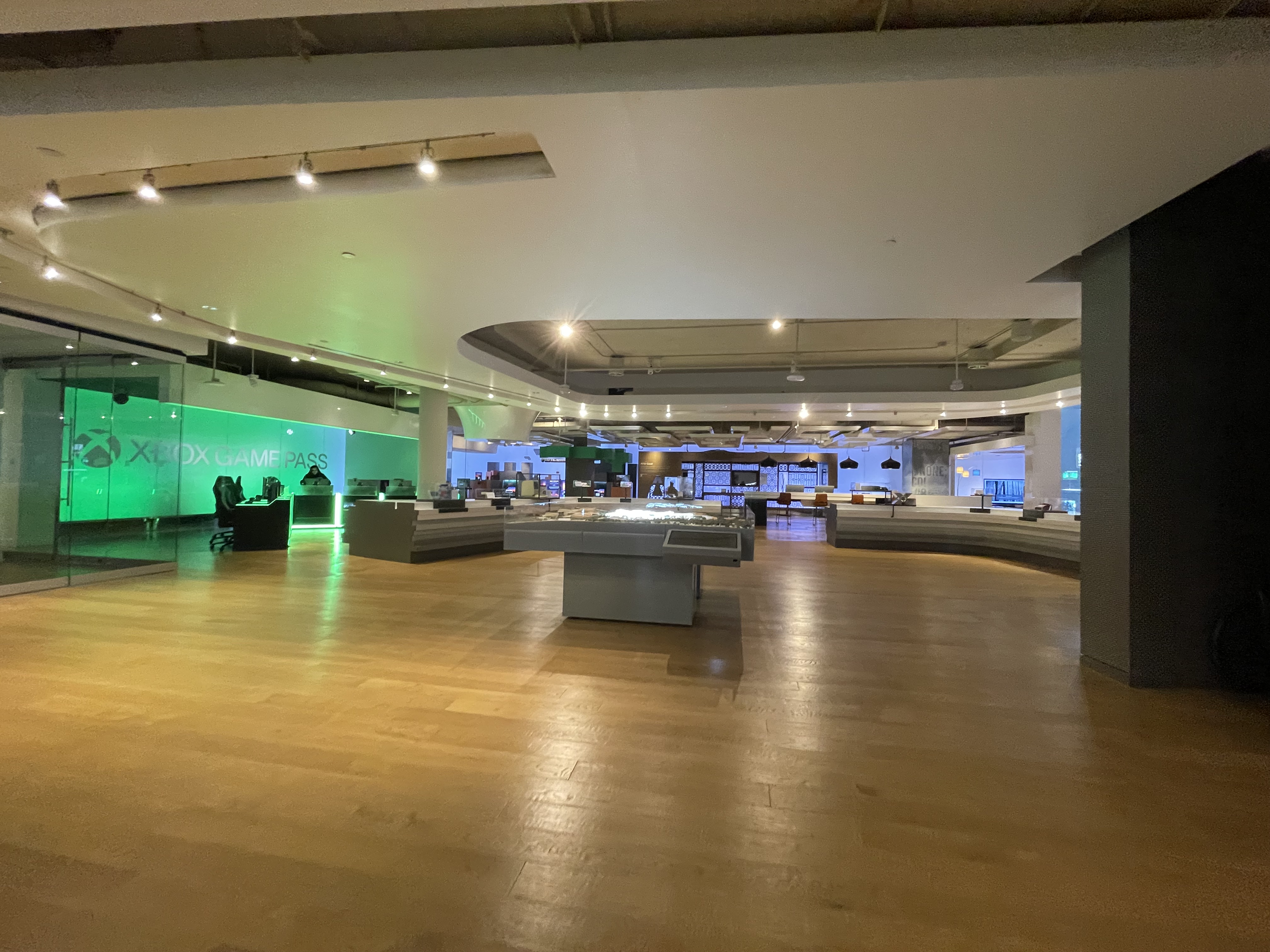
The space had a classic display-center like layout. It reminded me a bit of a corporate museum, and while I didn’t know what to expect, I suspected that it would be doing some amount of corporate story telling and lore building. I didn’t realize just how sparse it would be in that regard.
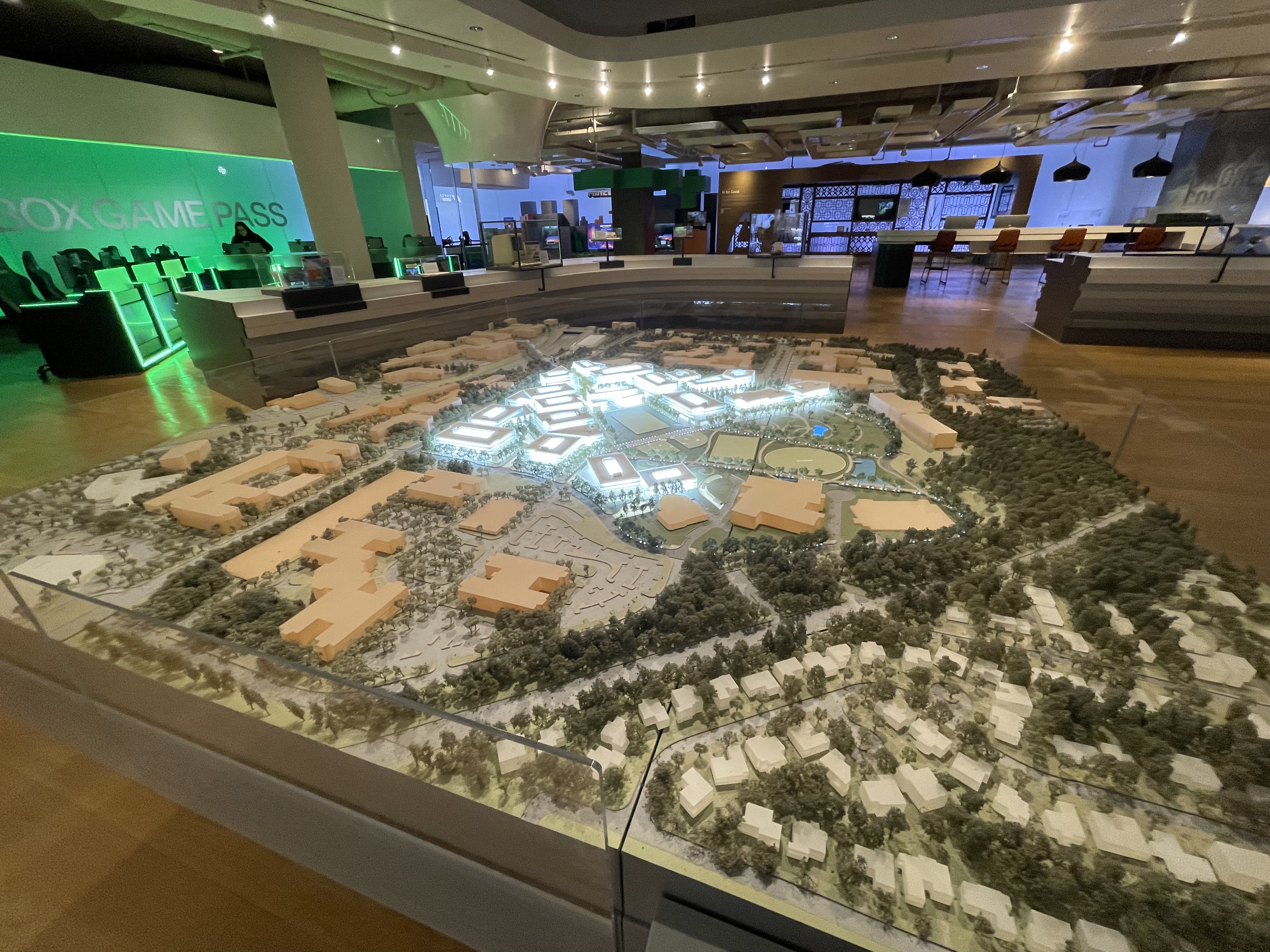
In fact, the first display was of the campus, with glowing buildings showing which belonged to Microsoft’s new campus. I wondered if the outlying buildings that were not lit up also belonged to the campus. There was a display panel attached to the table, but it was off, so there was no such interpretation available.
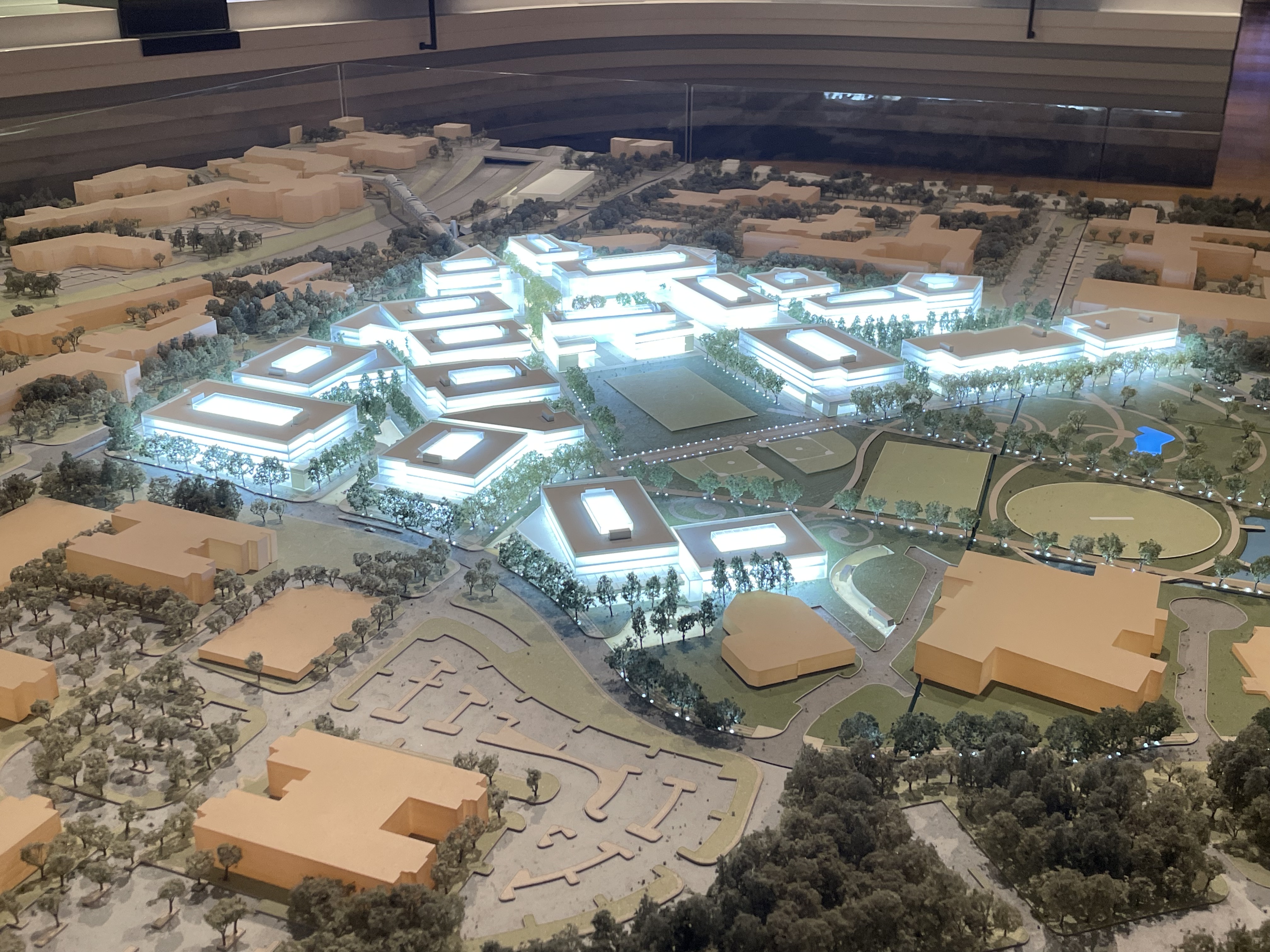
Microsoft’s campus is famous in part for its sports fields. It was rumored it was designed in this way to feel more like a college campus for the new graduates who transition to working here right after college. At the center of the campus, there are two buildings called Mixer and Submixer filled with food courts. But I’m getting ahead of myself.
With the glowing light, one could almost imagine the energy of the algorithms radiating out of these model buildings. Each building itself a little circuit chip glowing with energy.
The next display was a series of artifacts from Microsoft’s history. There was no attempt to create a coherent narrative between them, but each told a story from a key moment in the company or founders’ history.
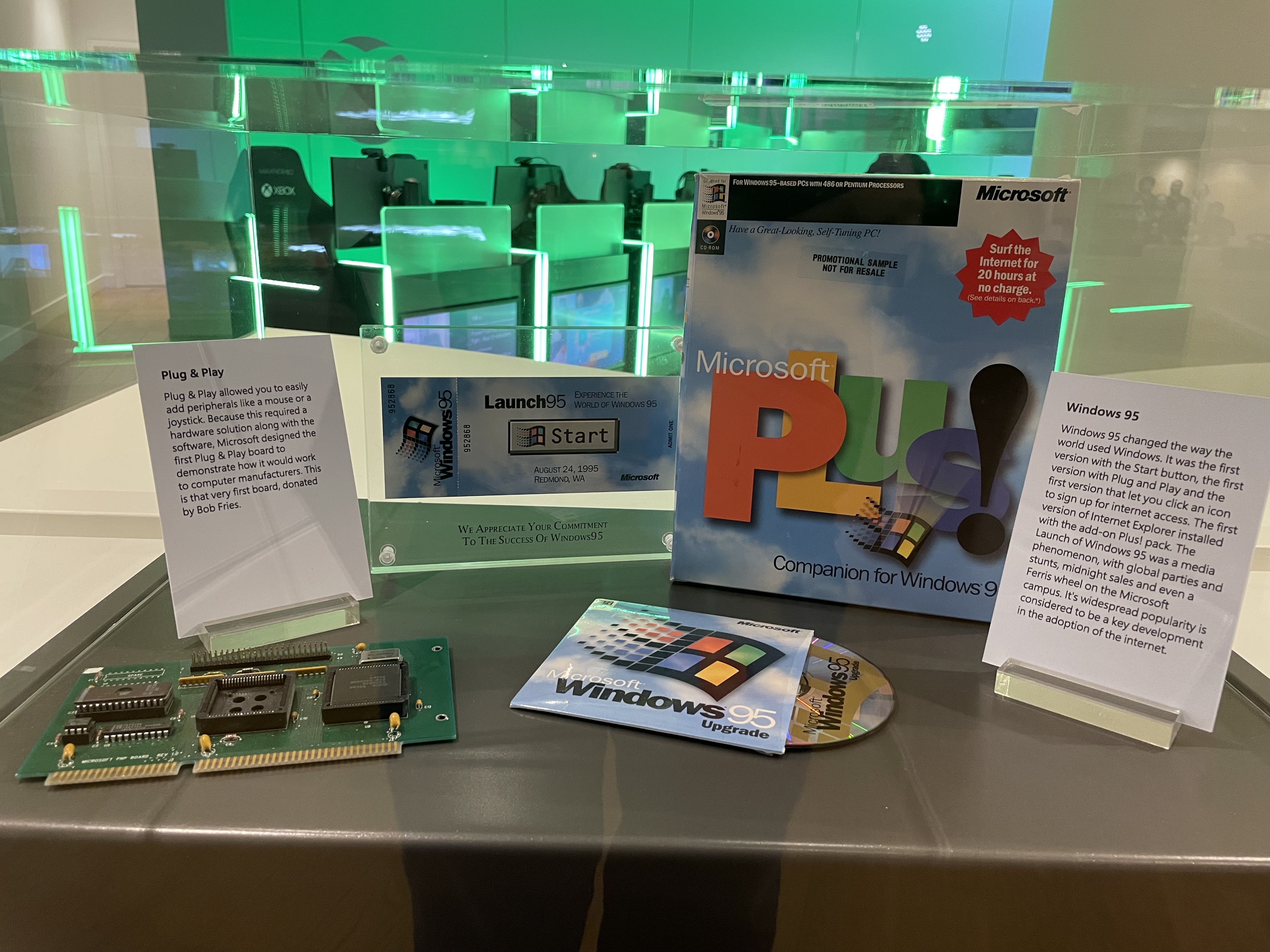
Windows 95 operating system and a plug and play cartridge. Microsoft historically has been most well known for their operating system, Windows. Part of the underlying computational infrastructure for the world’s PCs.
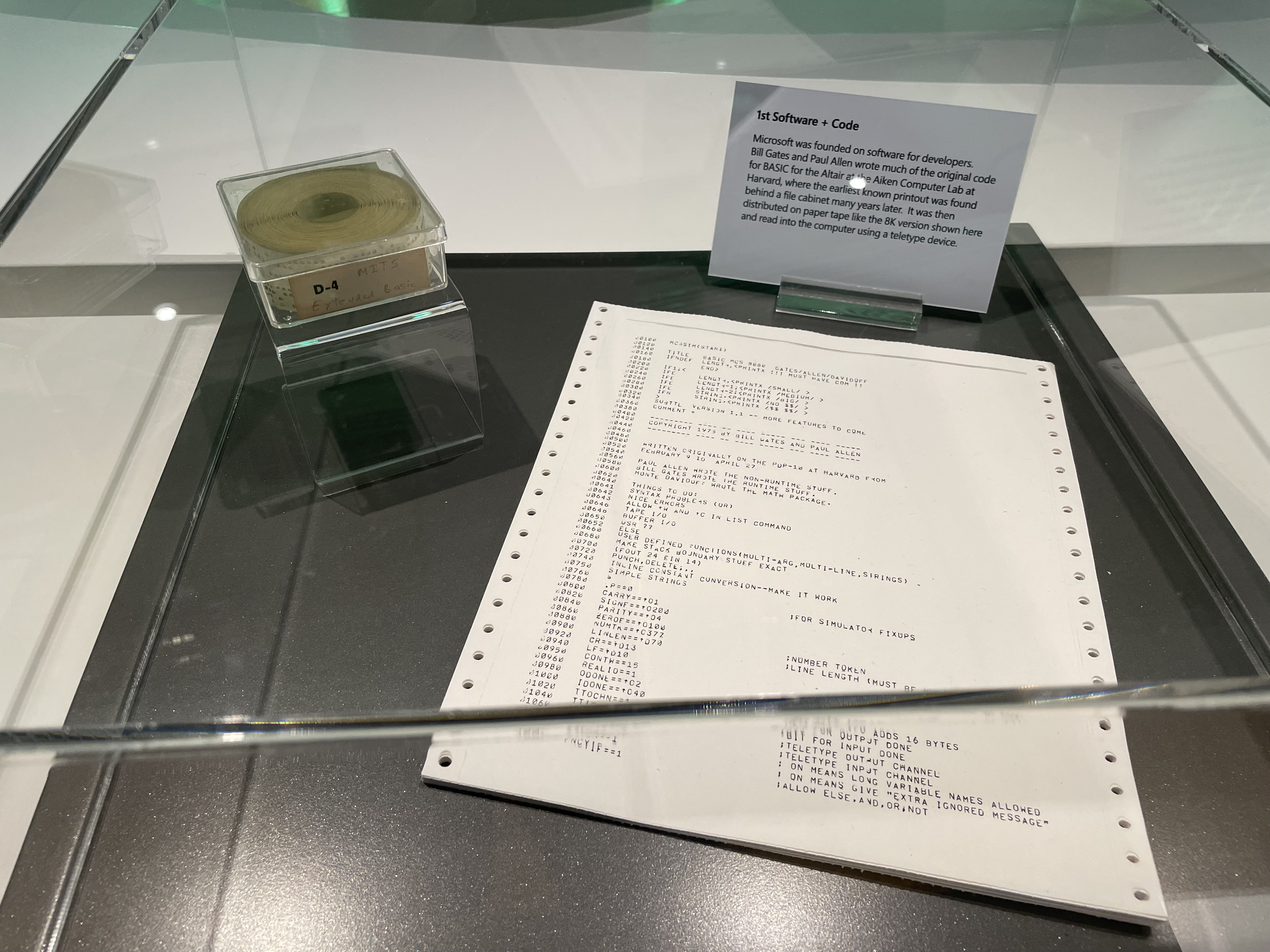
The original BASIC program program written by Allen and Gates, later distributed on paper tape. One of the most direct expressions of an algorithm, the source code, on display.
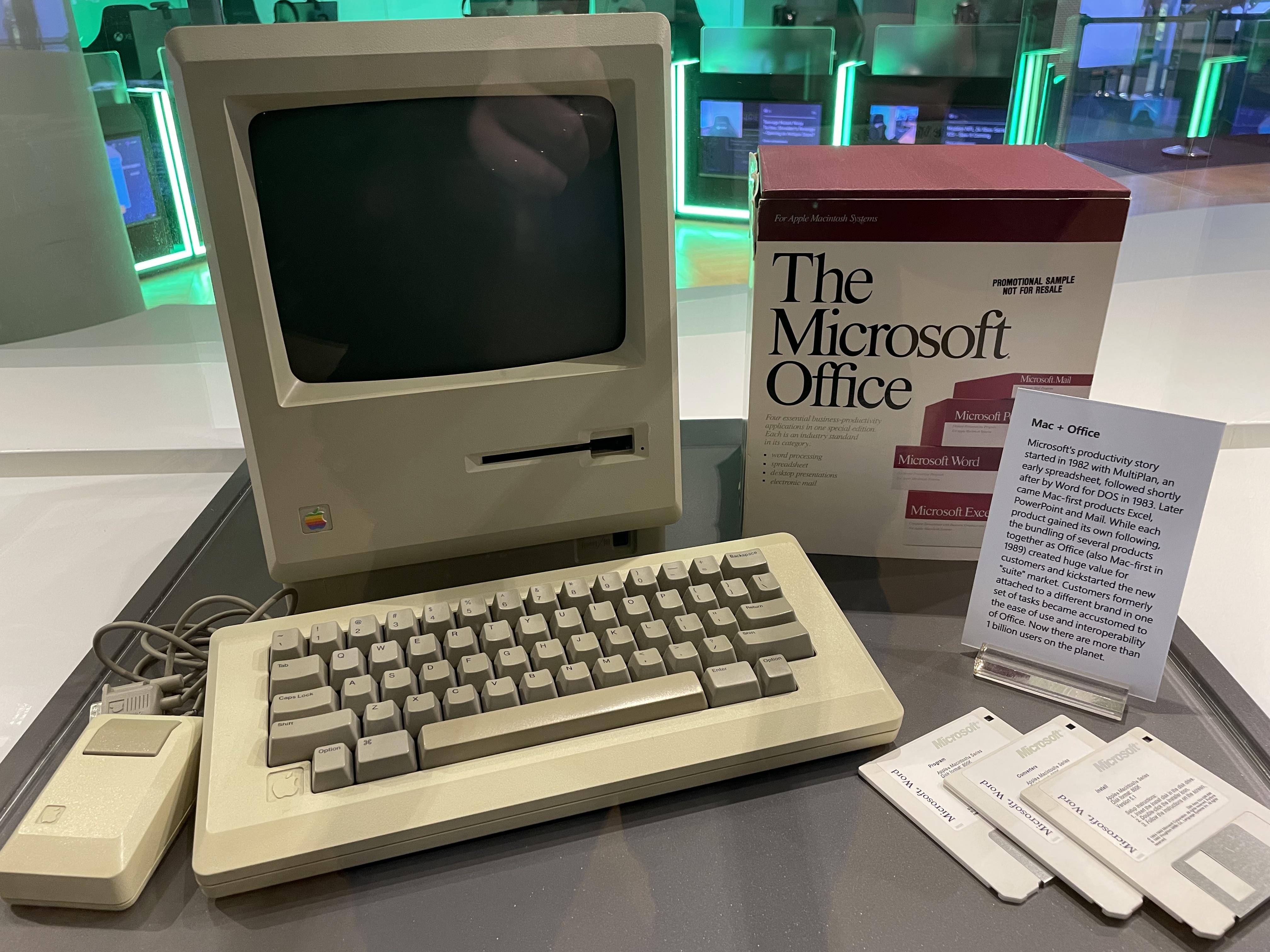
The original office suite for mac.
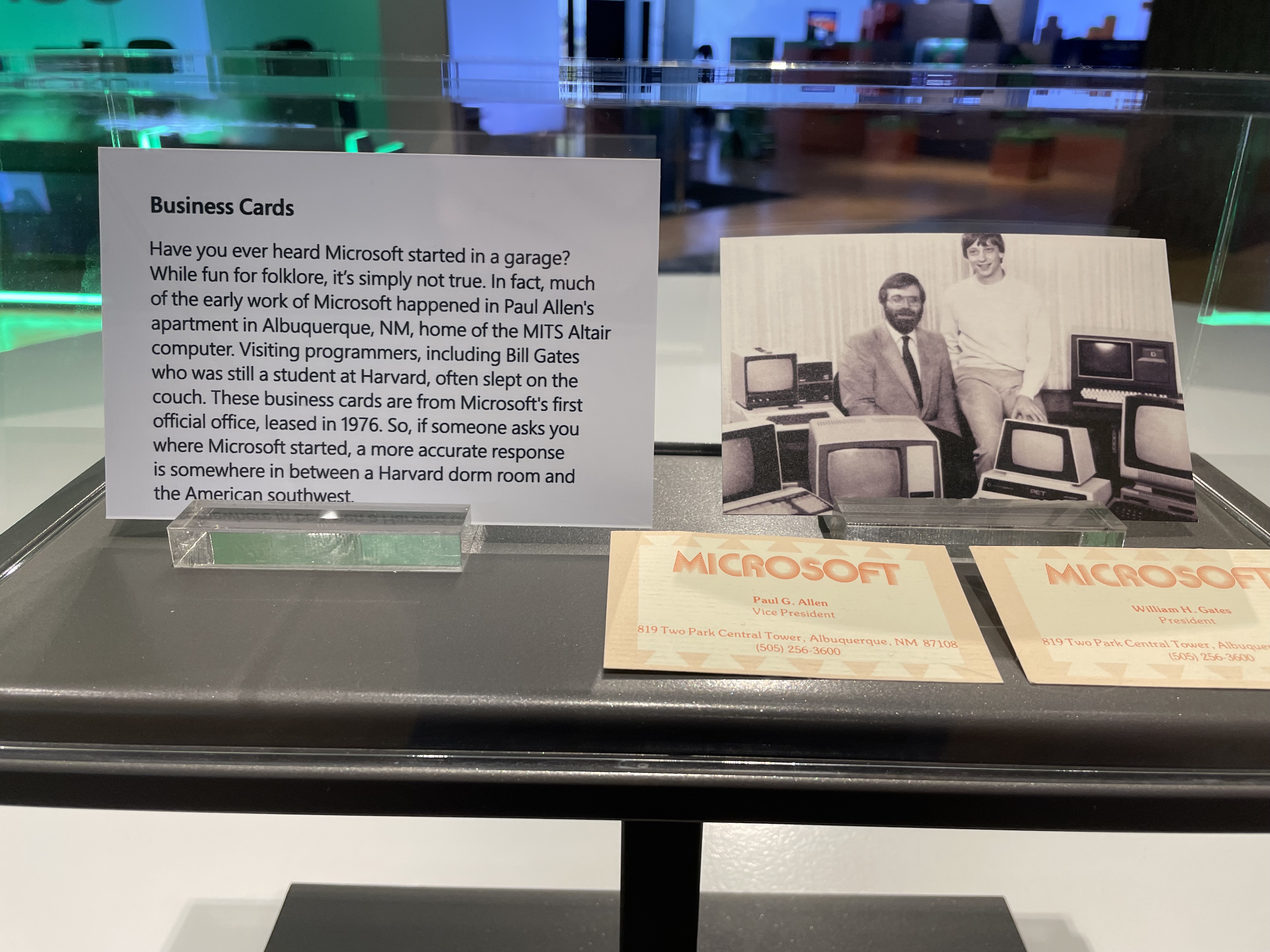
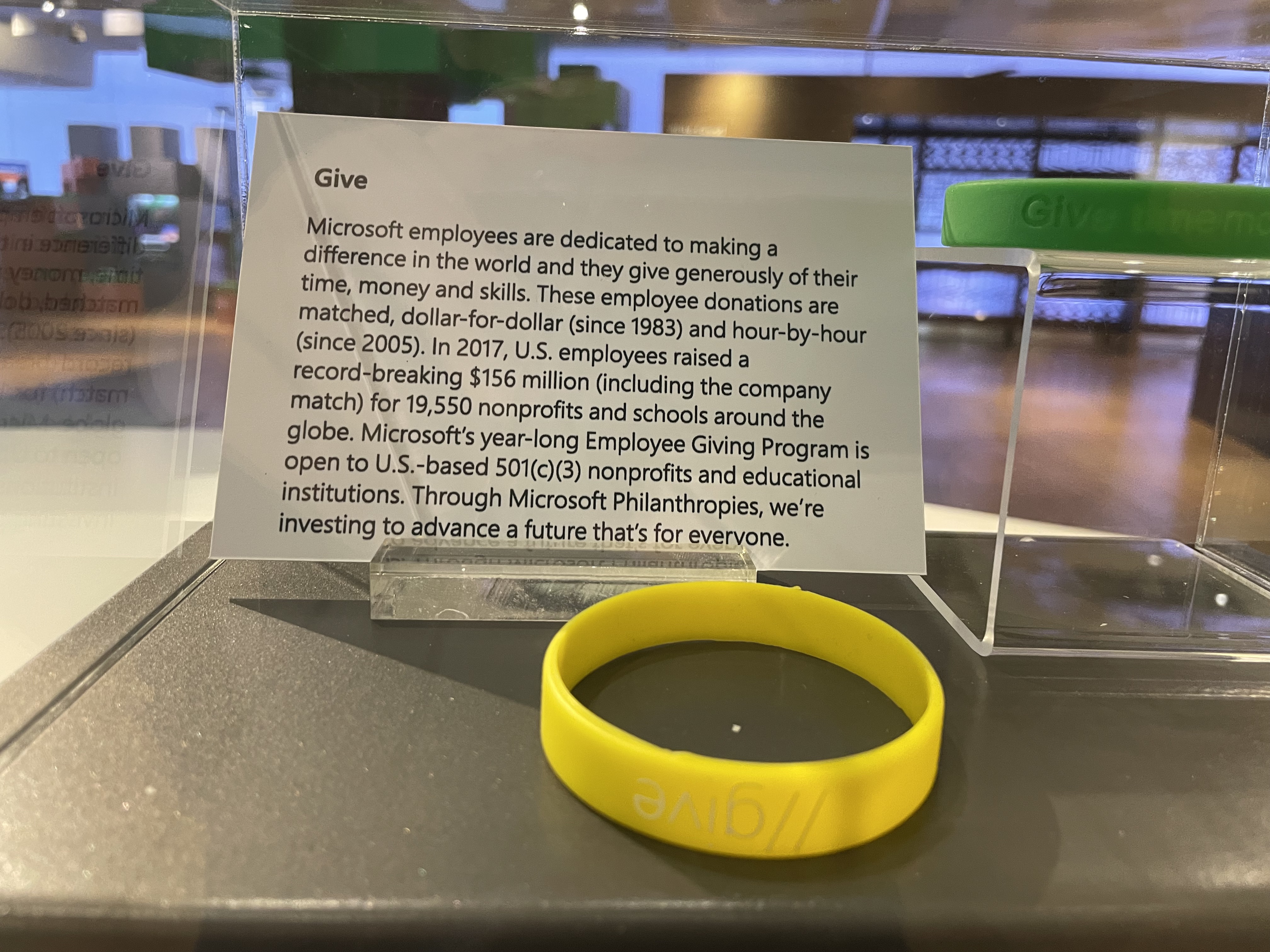
This one was odd. Some “artifacts” collected from excavations for their buildings. No mention of native artifacts, however.
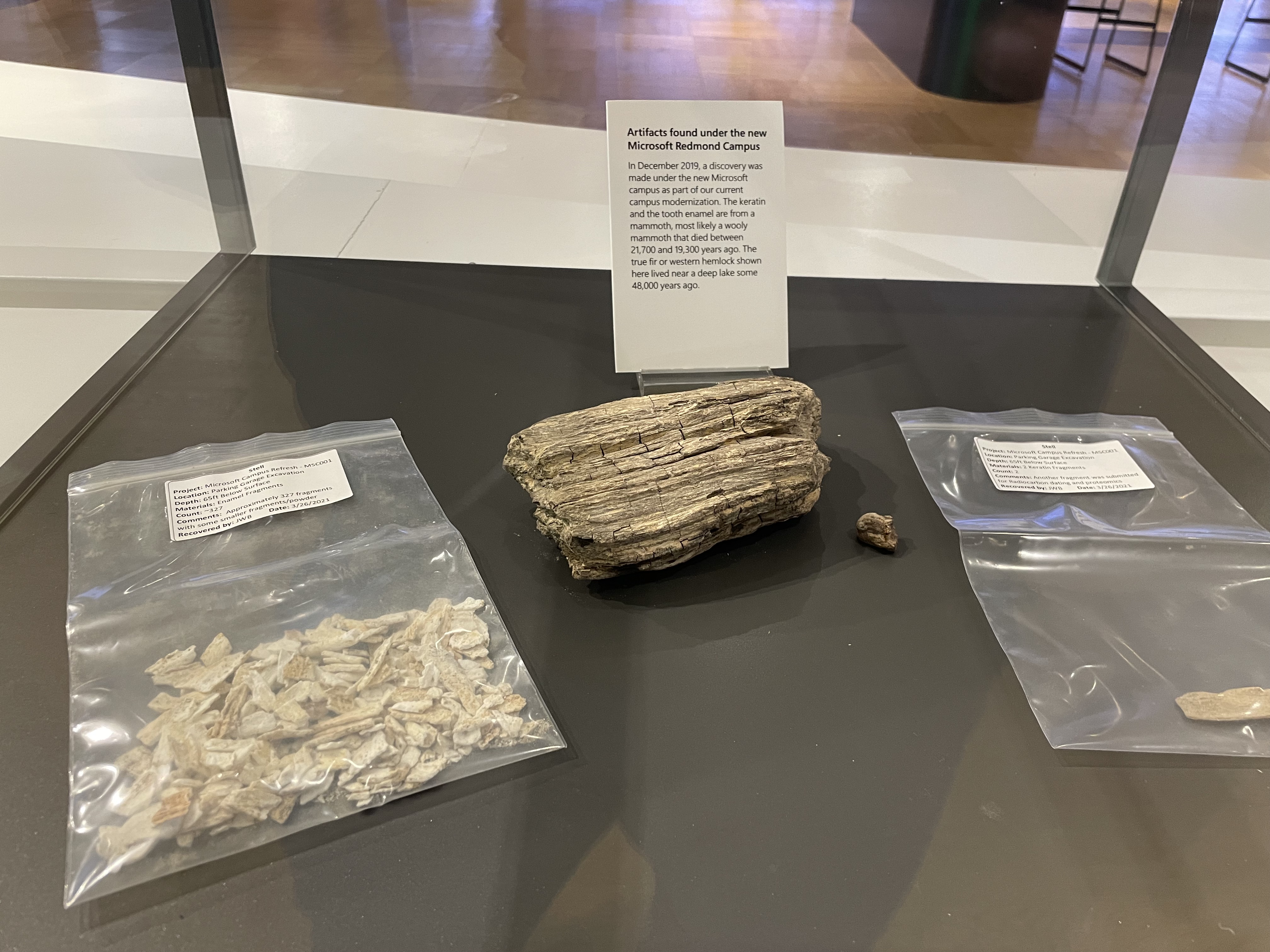
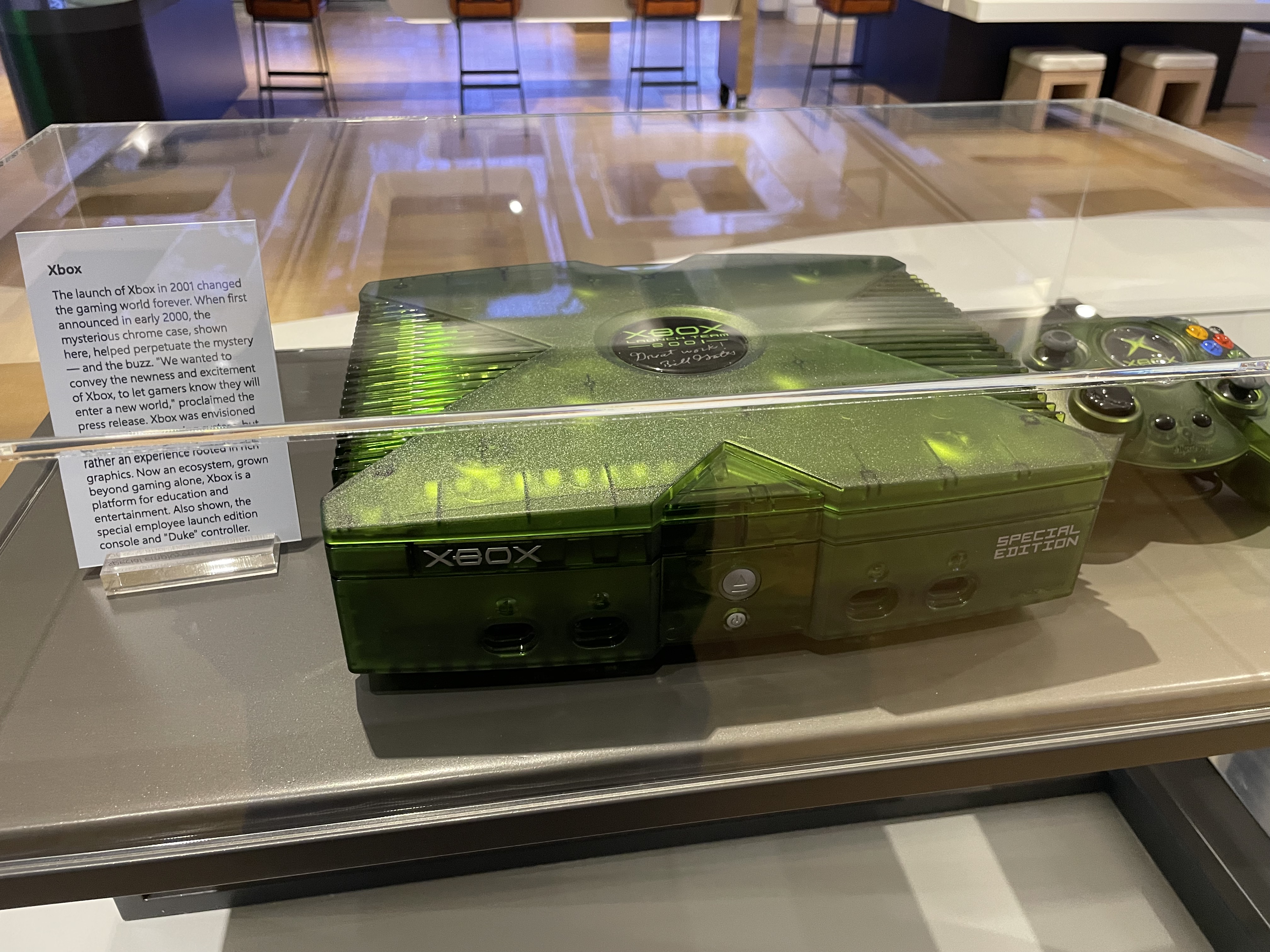 The original xbox, an example of entertainment focused algorithms.
The original xbox, an example of entertainment focused algorithms.

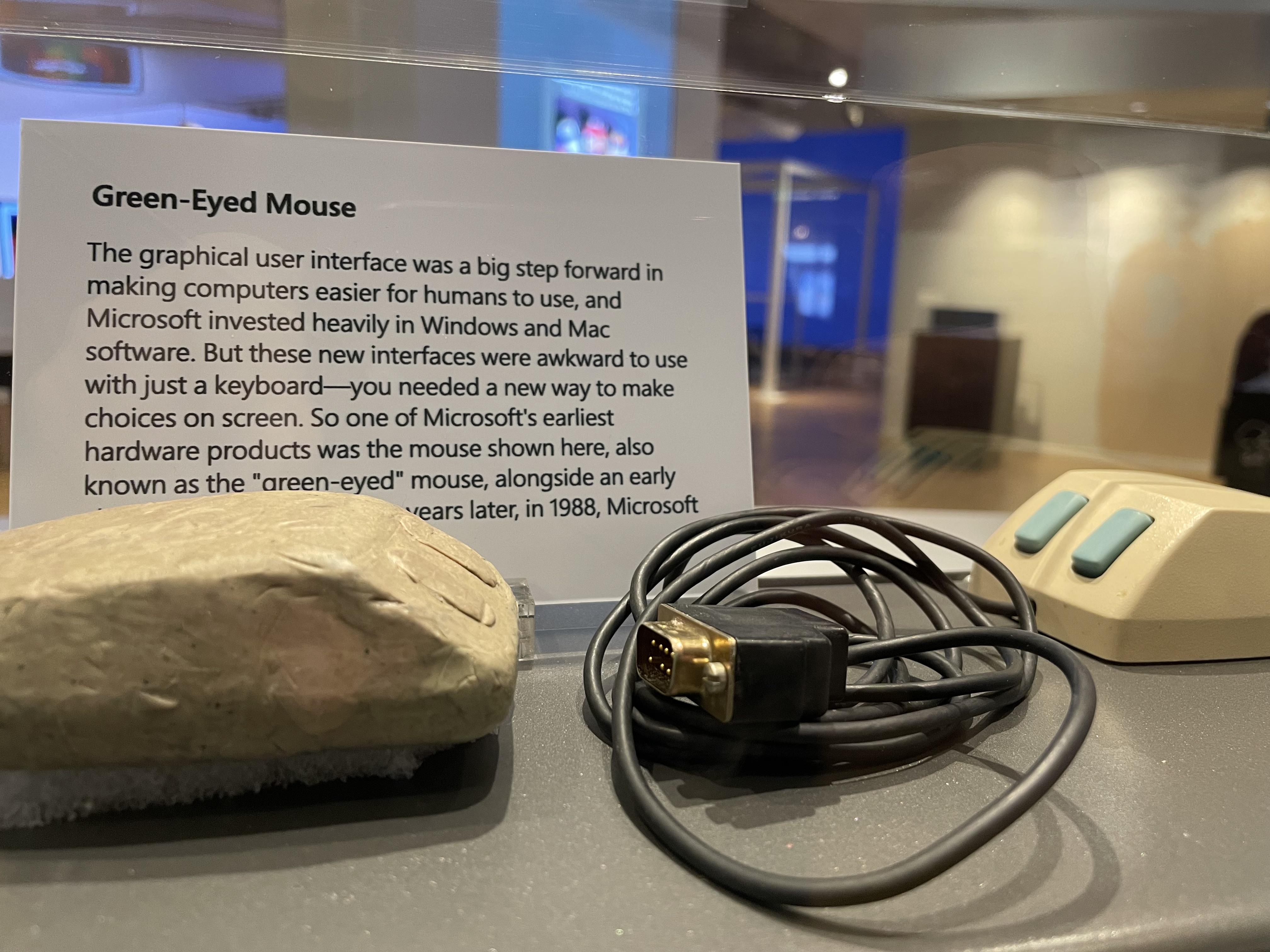 Human-computer interface—the mouse!
Human-computer interface—the mouse!
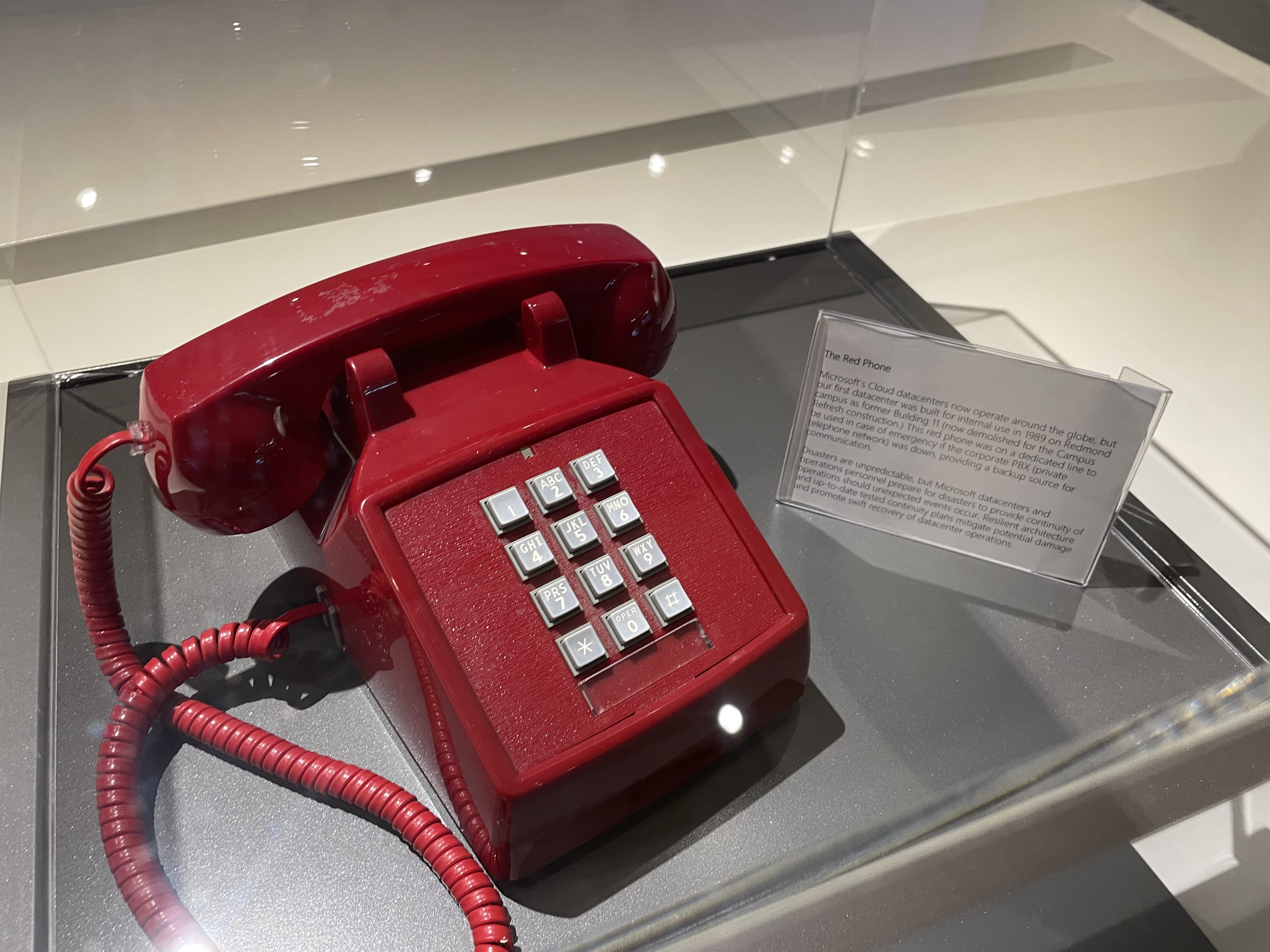 The red telephone for use in communicating with Microsoft’s data centers in the case of a communications outage.
The red telephone for use in communicating with Microsoft’s data centers in the case of a communications outage.
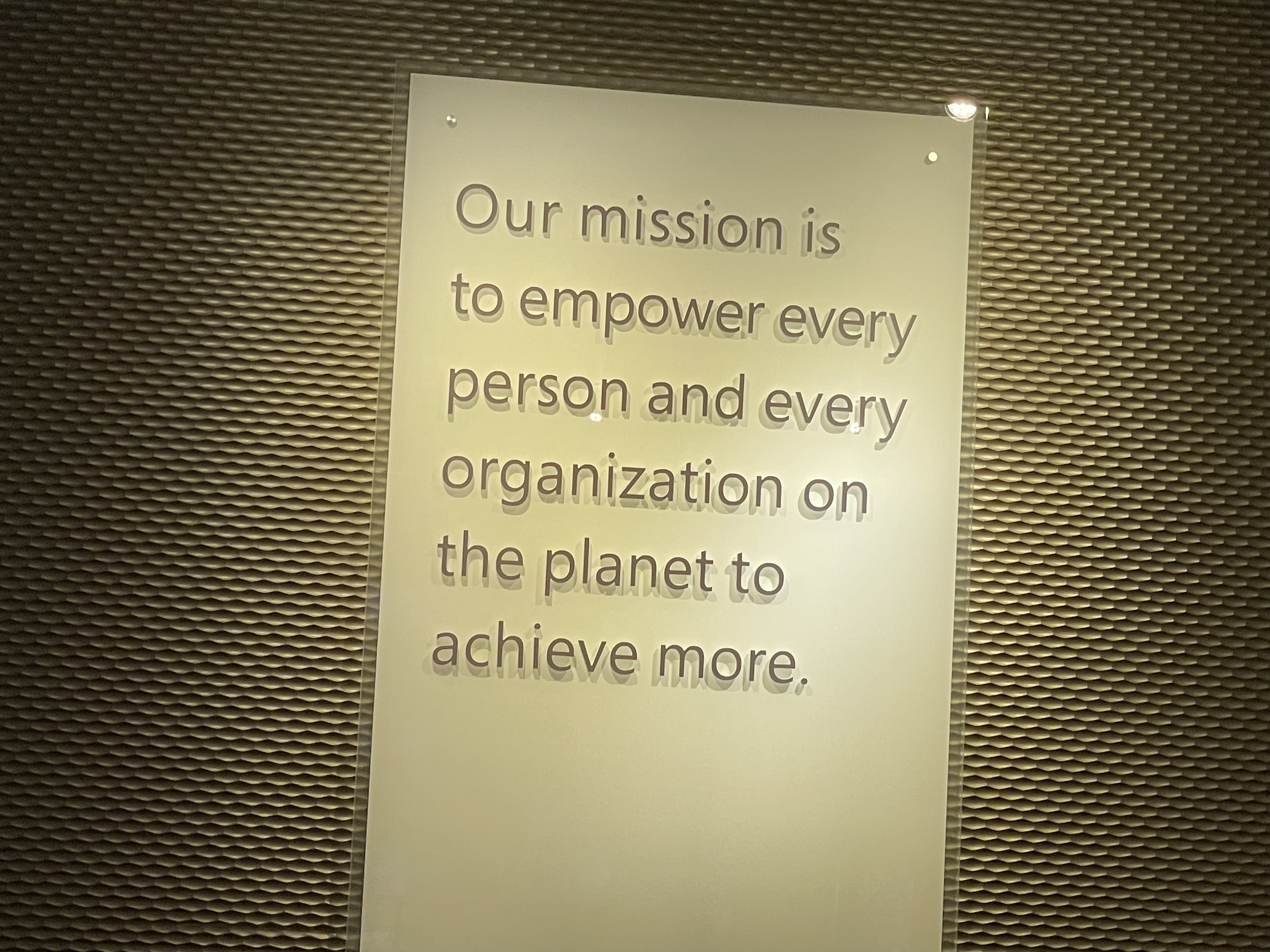
Microsoft’s corporate mission statement… A mention of the planet!
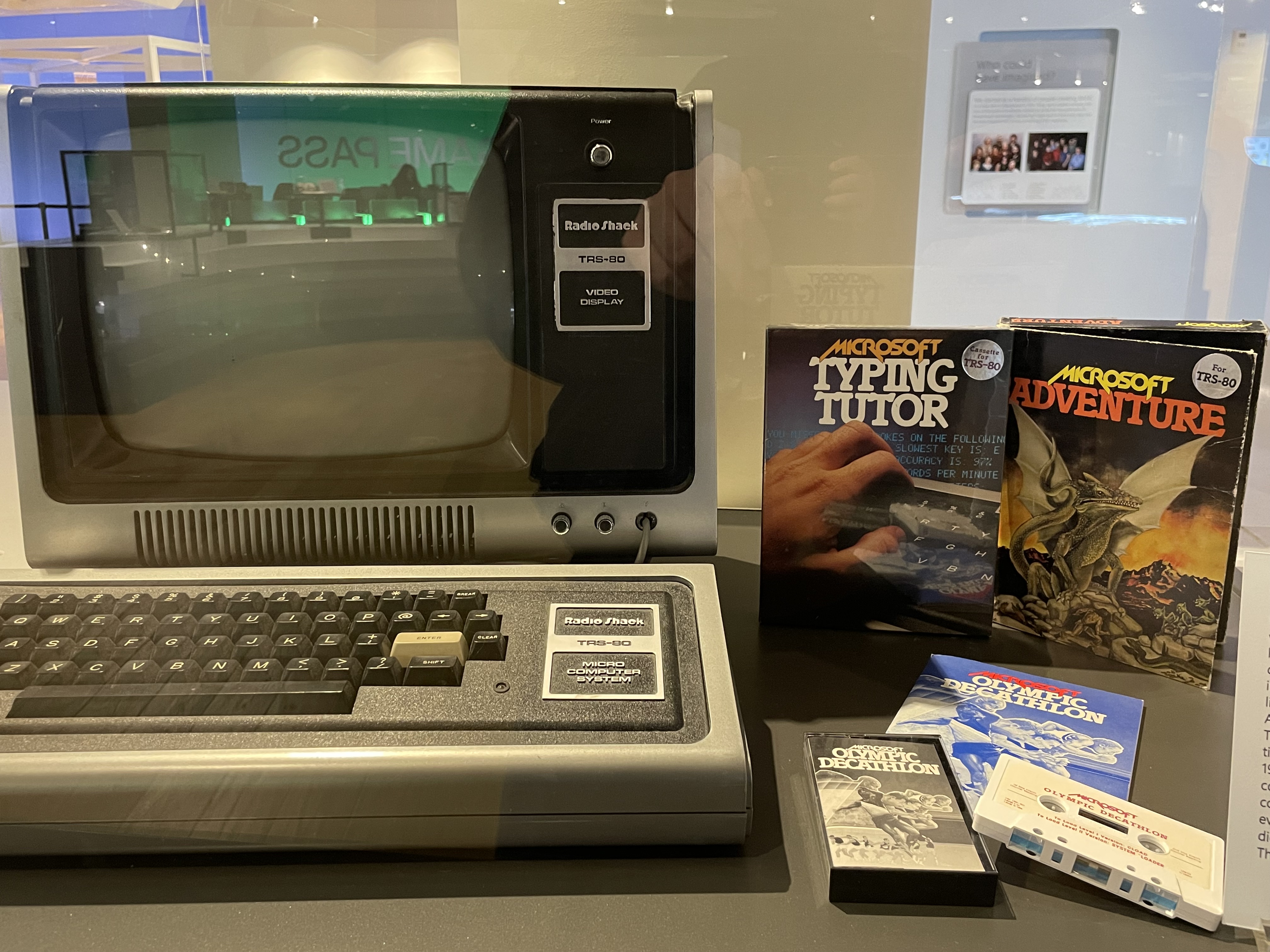 Some of the first games developed by microsoft.
Some of the first games developed by microsoft.
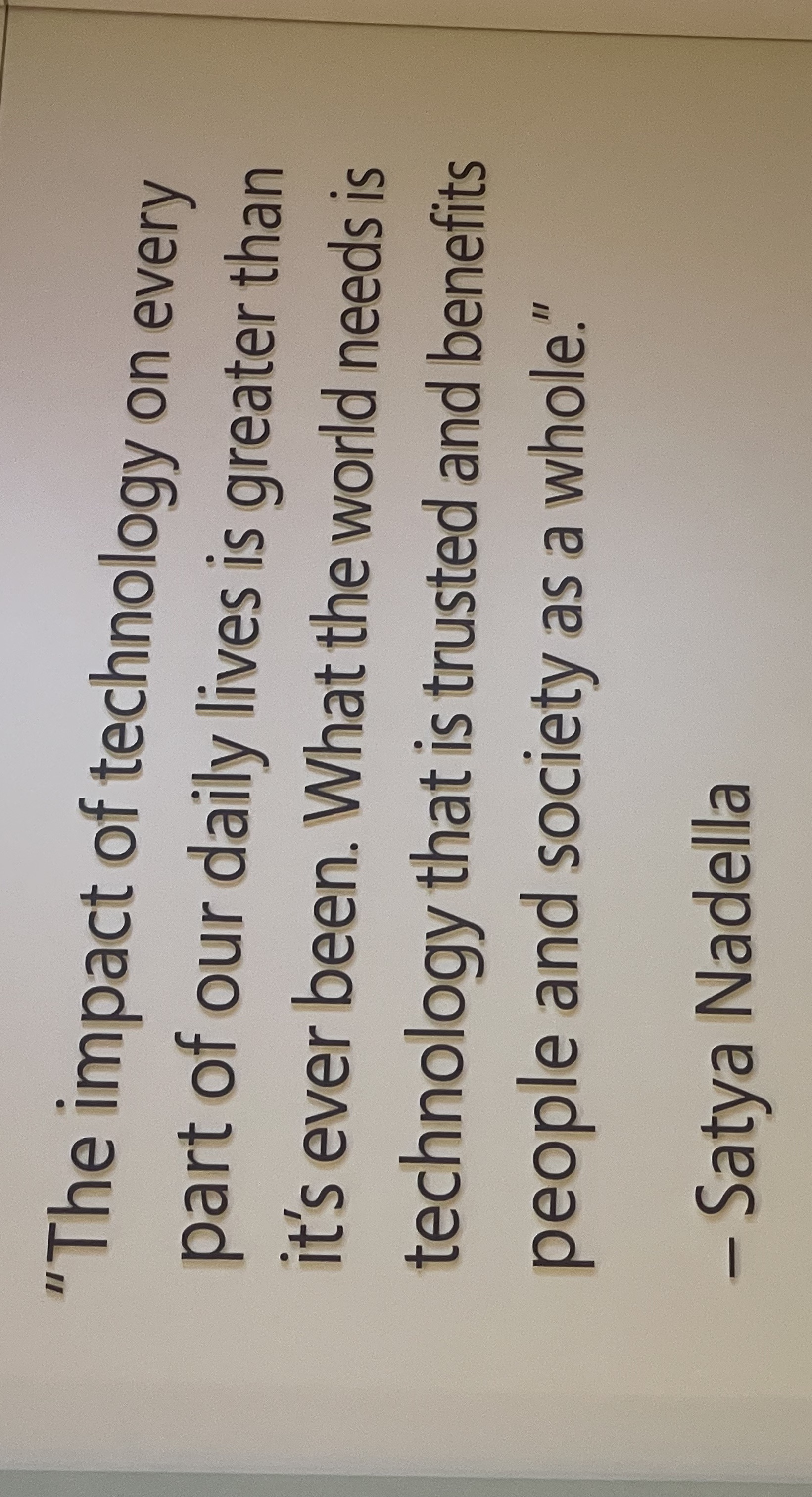 Nadella talking about the societal impact of technology… emphasis on the idea that technology need be “trusted”.
Nadella talking about the societal impact of technology… emphasis on the idea that technology need be “trusted”.
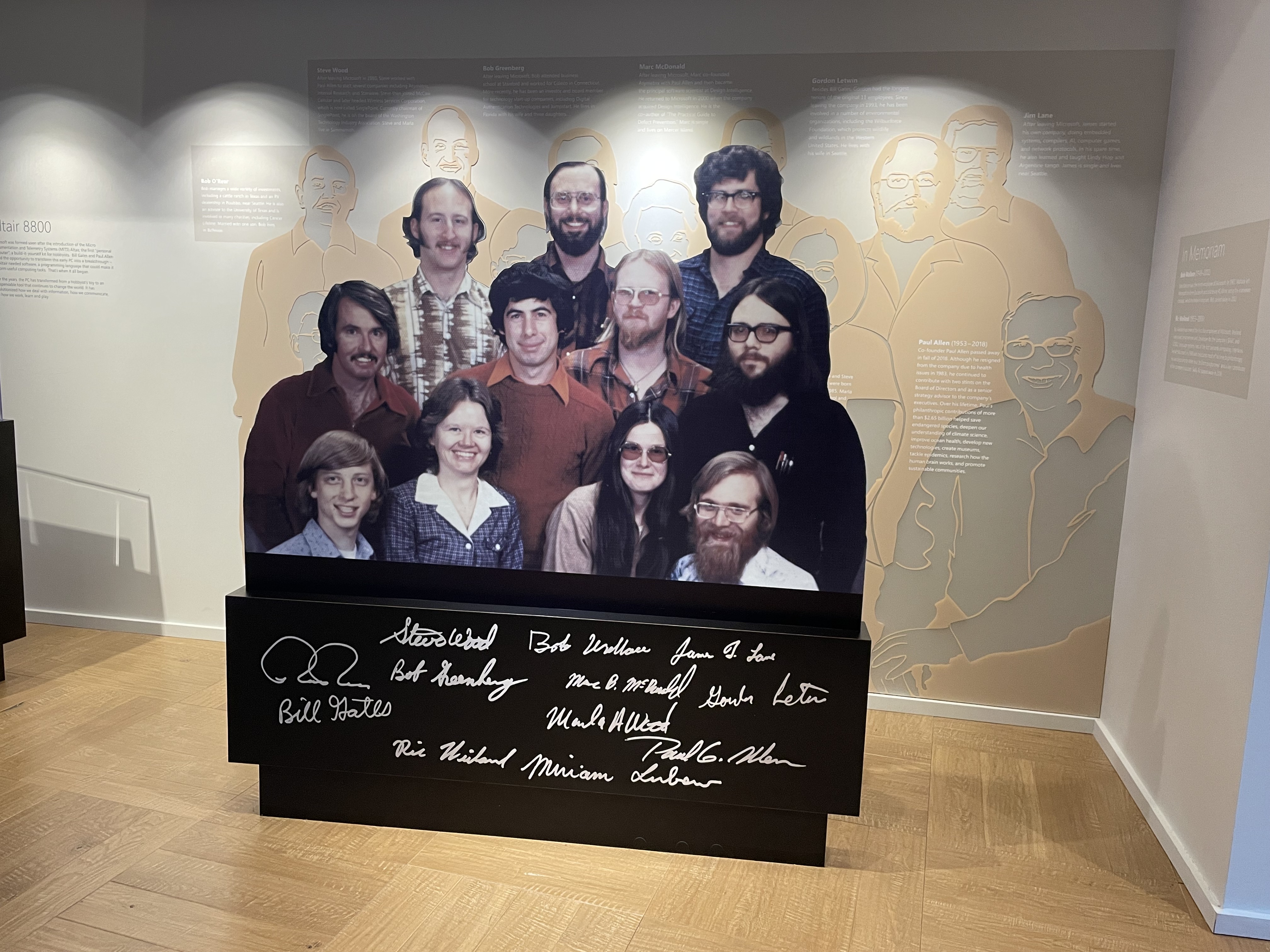 The original Microsoft team.
The original Microsoft team.
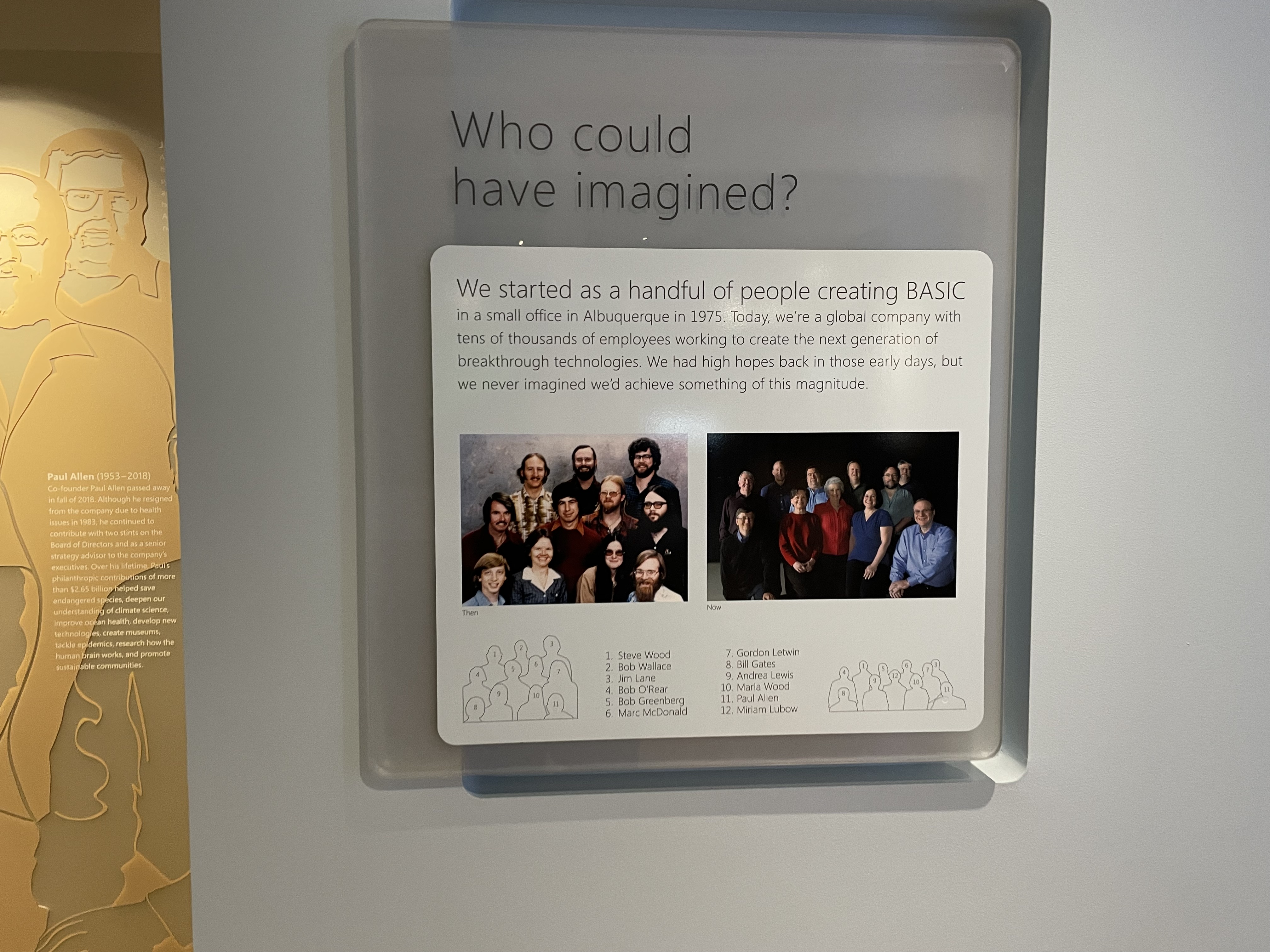
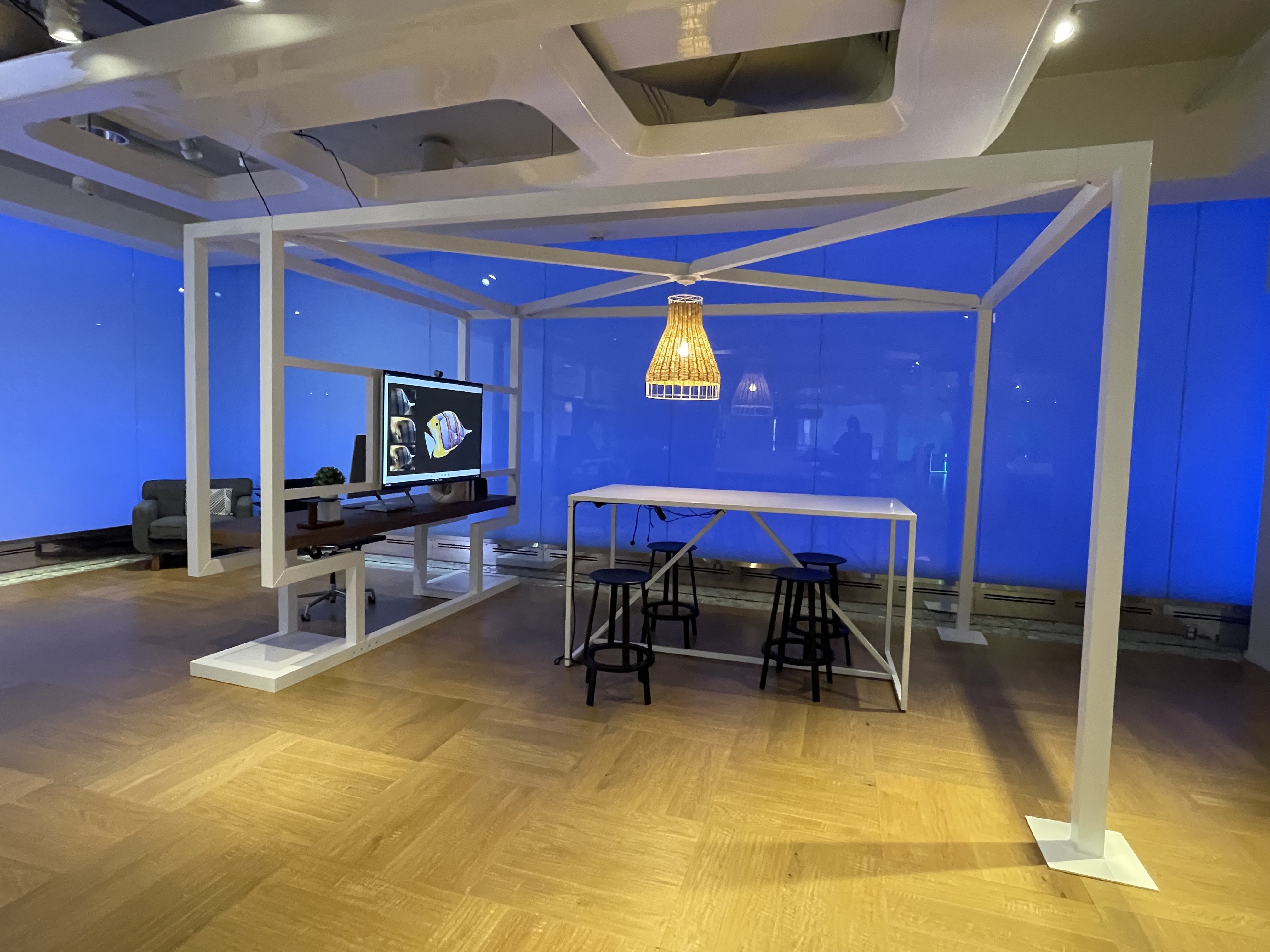 A somewhat confusing setting. Not sure what it’s for!
A somewhat confusing setting. Not sure what it’s for!
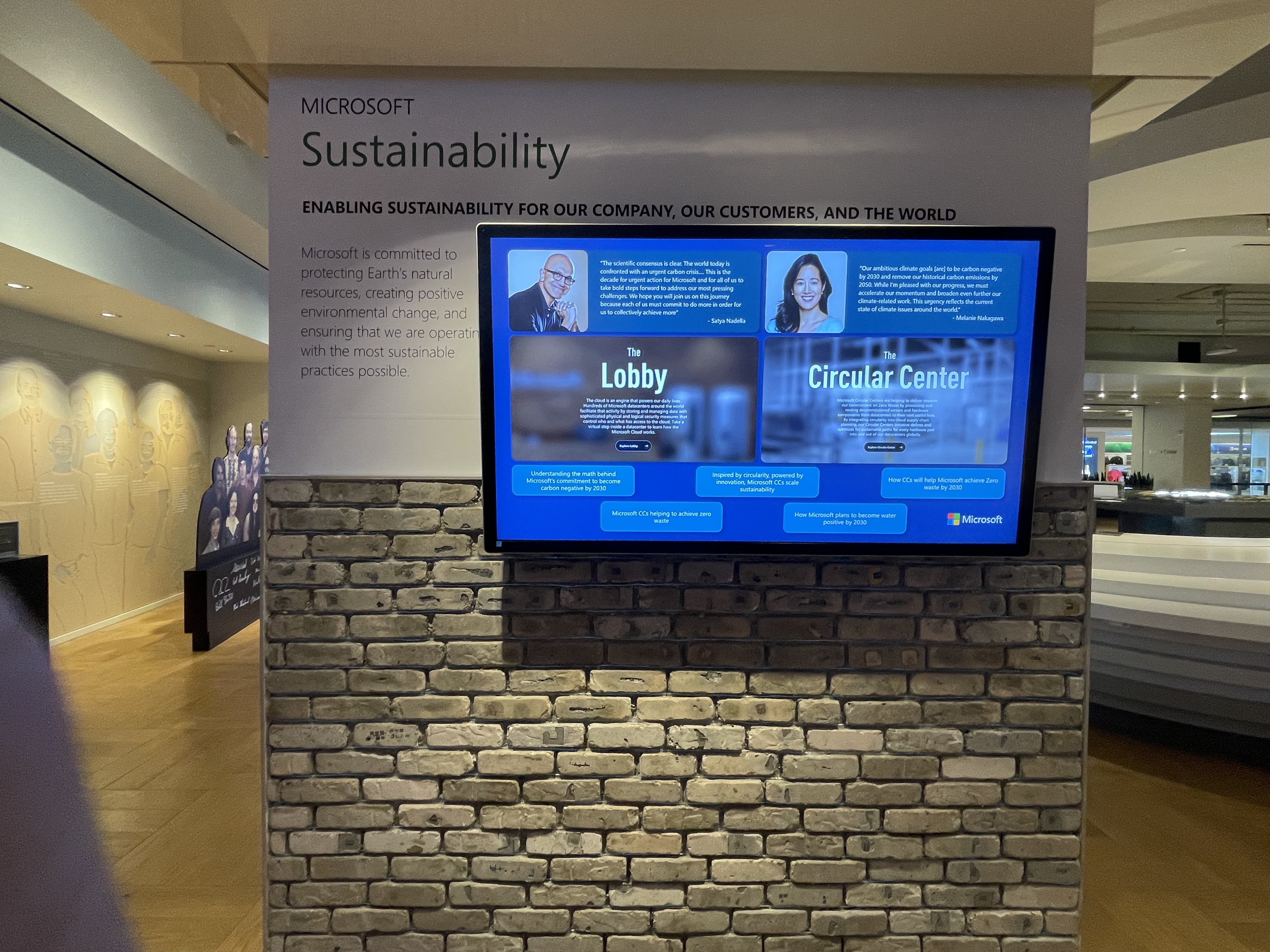 A panel about sustainability, with different explorable videos and programs highlighting for example “The Circular Center” where data center components get reused and recycled back into other purposes.
A panel about sustainability, with different explorable videos and programs highlighting for example “The Circular Center” where data center components get reused and recycled back into other purposes.
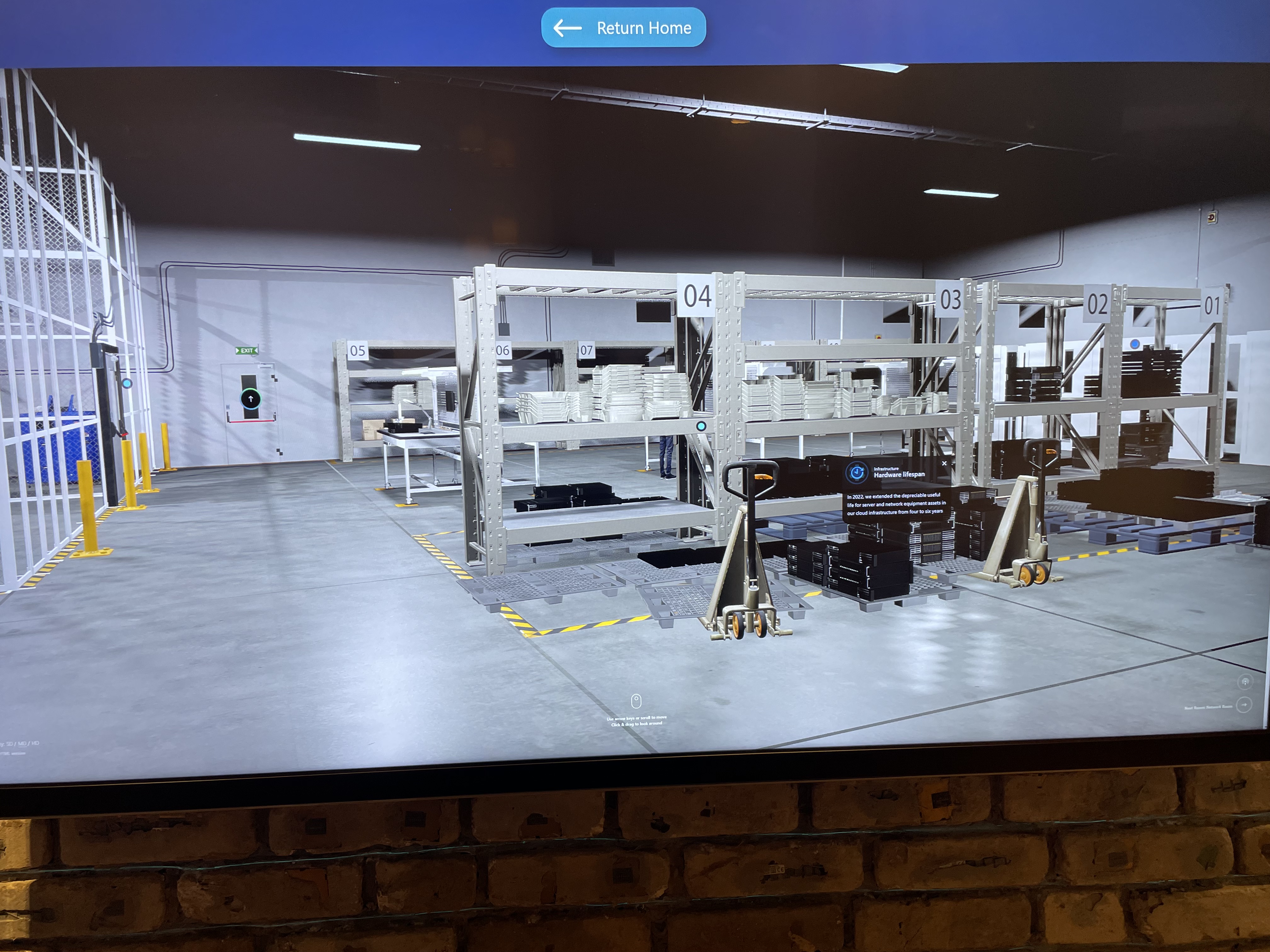
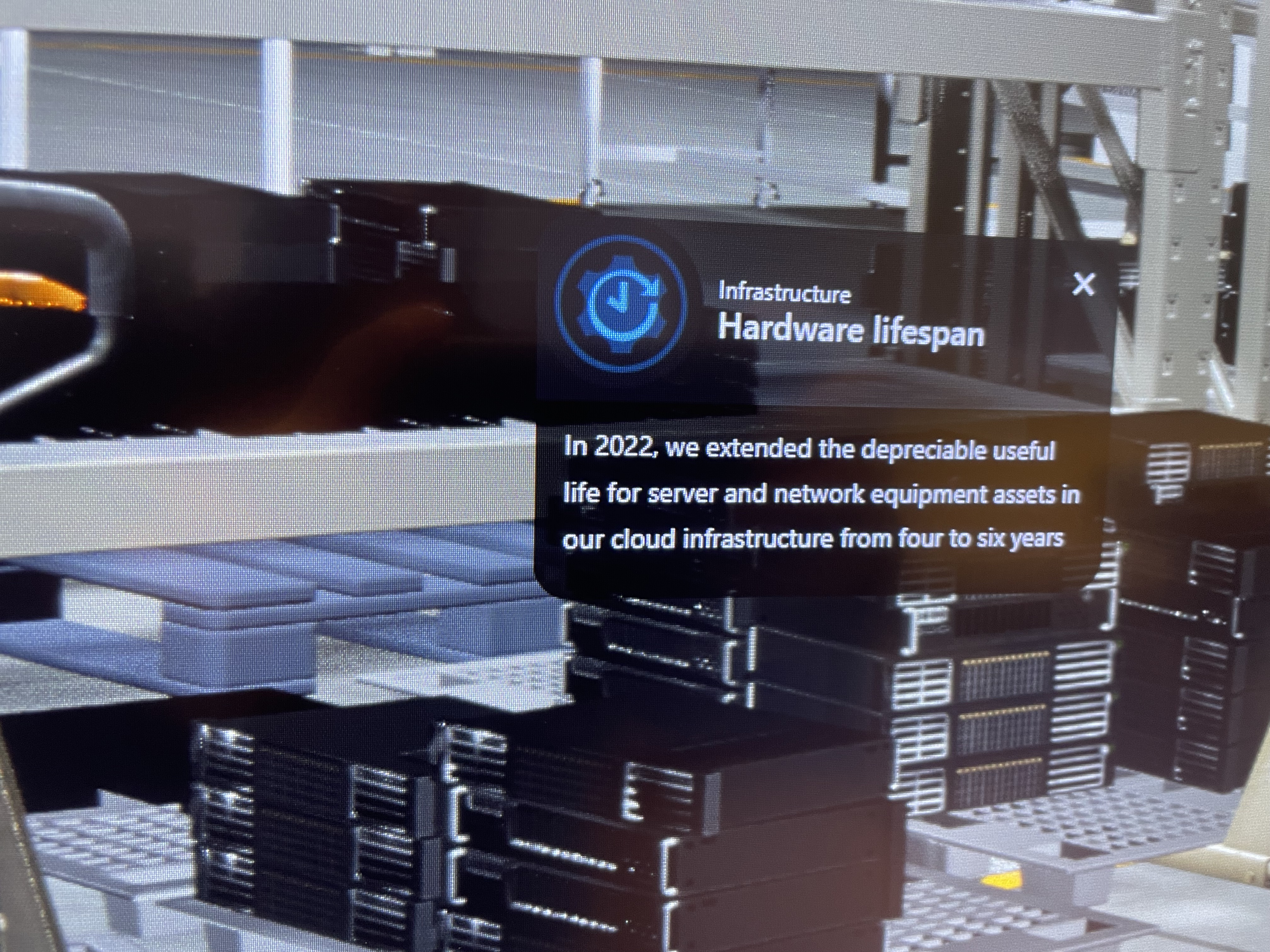 Discussing the resource usage of data centers and how they expanded the “depreciable useful life” of “equipment assets in our cloud infrastructure” from 4 to 6 years.
Discussing the resource usage of data centers and how they expanded the “depreciable useful life” of “equipment assets in our cloud infrastructure” from 4 to 6 years.
 Bricks with circuitry components. Reminded me of the sense that the closer you get to these vast complex systems, the greater the materiality of them. The “algorithm” is itself a complex assemblage of servers and chips running on them and operating systems running in them and compilers that build them and programmers and IT technicians and business plans and corporate responsibility statements and so on. Microsoft is home to all of these things and organizes them in such a way to create new software and maintain the old ones for the world that depends on it. Indeed, Microsoft, due to its vastness in terms of the software offers, is linked in responsibility to many millions of stakeholders who require that their software continue to function robustly. Every Word user relies on Microsoft and therefore the decisions made in a place like this. It is far more vast and globe spanning than, say, a grub hub algorithm, even though it seems to be not as centrally coordinated as those algorithms are. After all, word can run somewhat autonomously of Microsoft on your computer, meaning it’s more distributed. Although with the advent of the cloud that’s also starting to change.
Bricks with circuitry components. Reminded me of the sense that the closer you get to these vast complex systems, the greater the materiality of them. The “algorithm” is itself a complex assemblage of servers and chips running on them and operating systems running in them and compilers that build them and programmers and IT technicians and business plans and corporate responsibility statements and so on. Microsoft is home to all of these things and organizes them in such a way to create new software and maintain the old ones for the world that depends on it. Indeed, Microsoft, due to its vastness in terms of the software offers, is linked in responsibility to many millions of stakeholders who require that their software continue to function robustly. Every Word user relies on Microsoft and therefore the decisions made in a place like this. It is far more vast and globe spanning than, say, a grub hub algorithm, even though it seems to be not as centrally coordinated as those algorithms are. After all, word can run somewhat autonomously of Microsoft on your computer, meaning it’s more distributed. Although with the advent of the cloud that’s also starting to change.
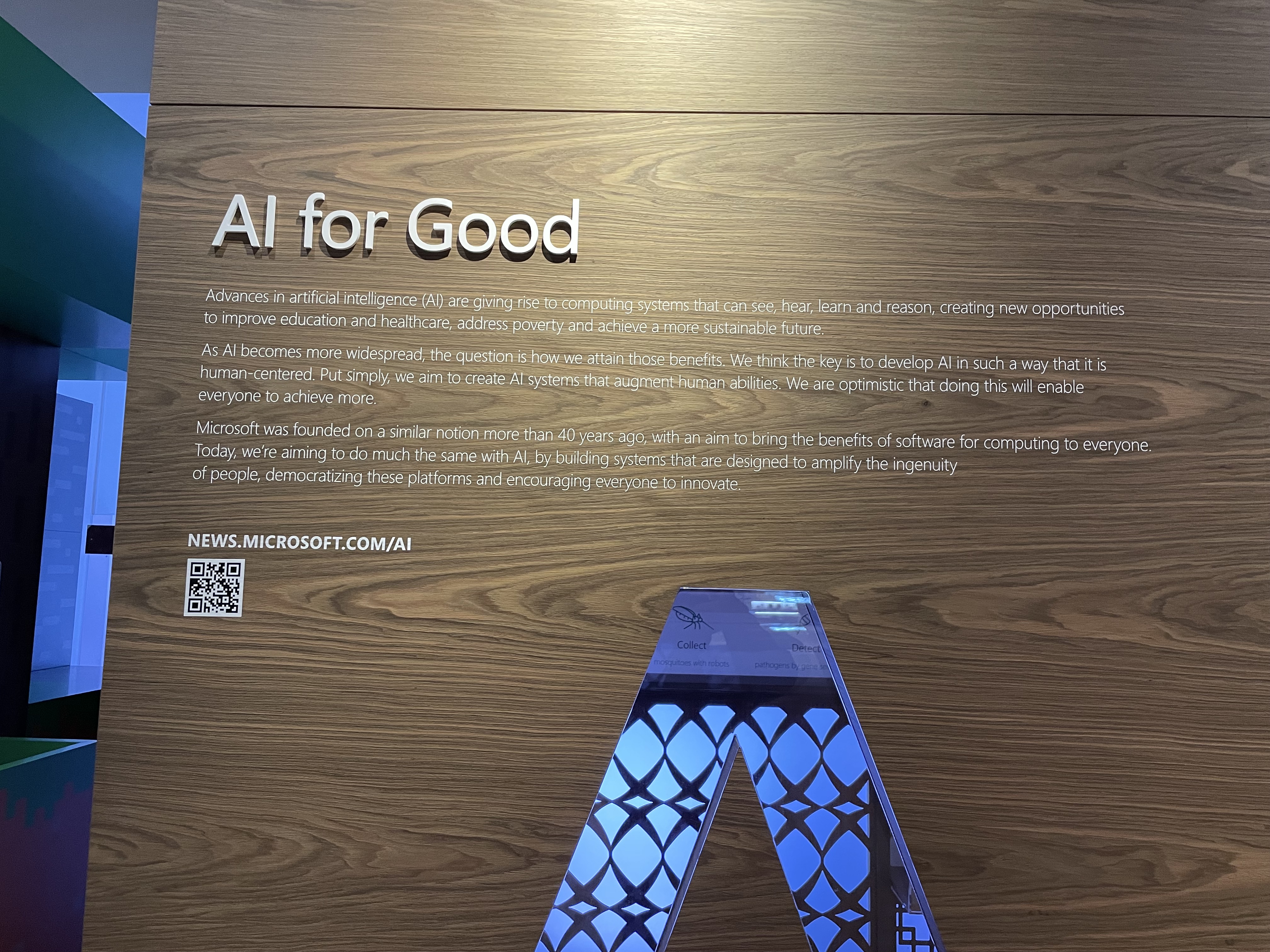 Strangely dated “AI for good” display showing how they are creating social interventions using AI. Inside there are different displays, not all enabled, discussing projects. One is about mosquitos, another is about IoT sensing on a farm. Clearly a lot of algorithms being developed here on the fringes of what might be called R&D.
Strangely dated “AI for good” display showing how they are creating social interventions using AI. Inside there are different displays, not all enabled, discussing projects. One is about mosquitos, another is about IoT sensing on a farm. Clearly a lot of algorithms being developed here on the fringes of what might be called R&D.
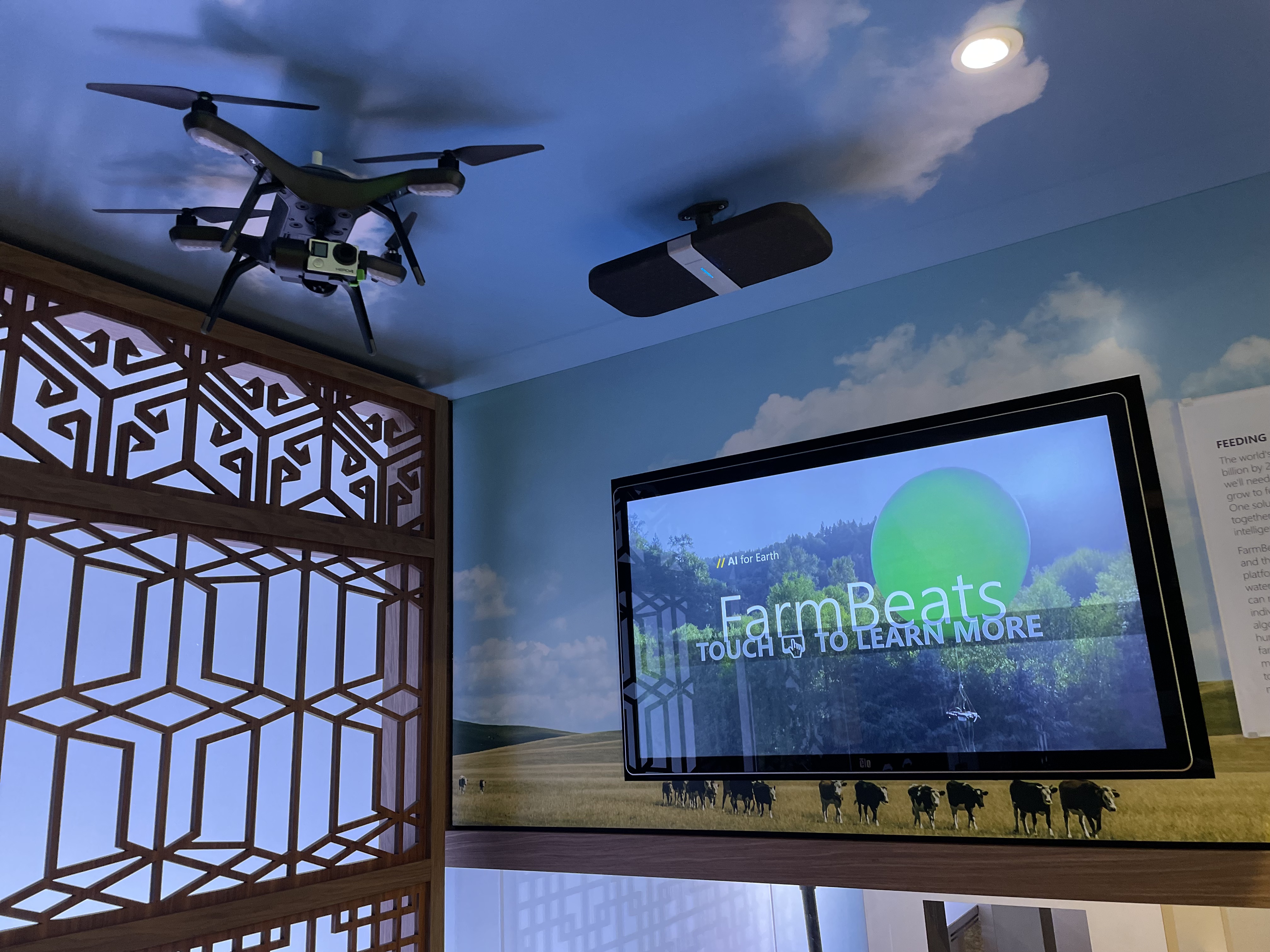
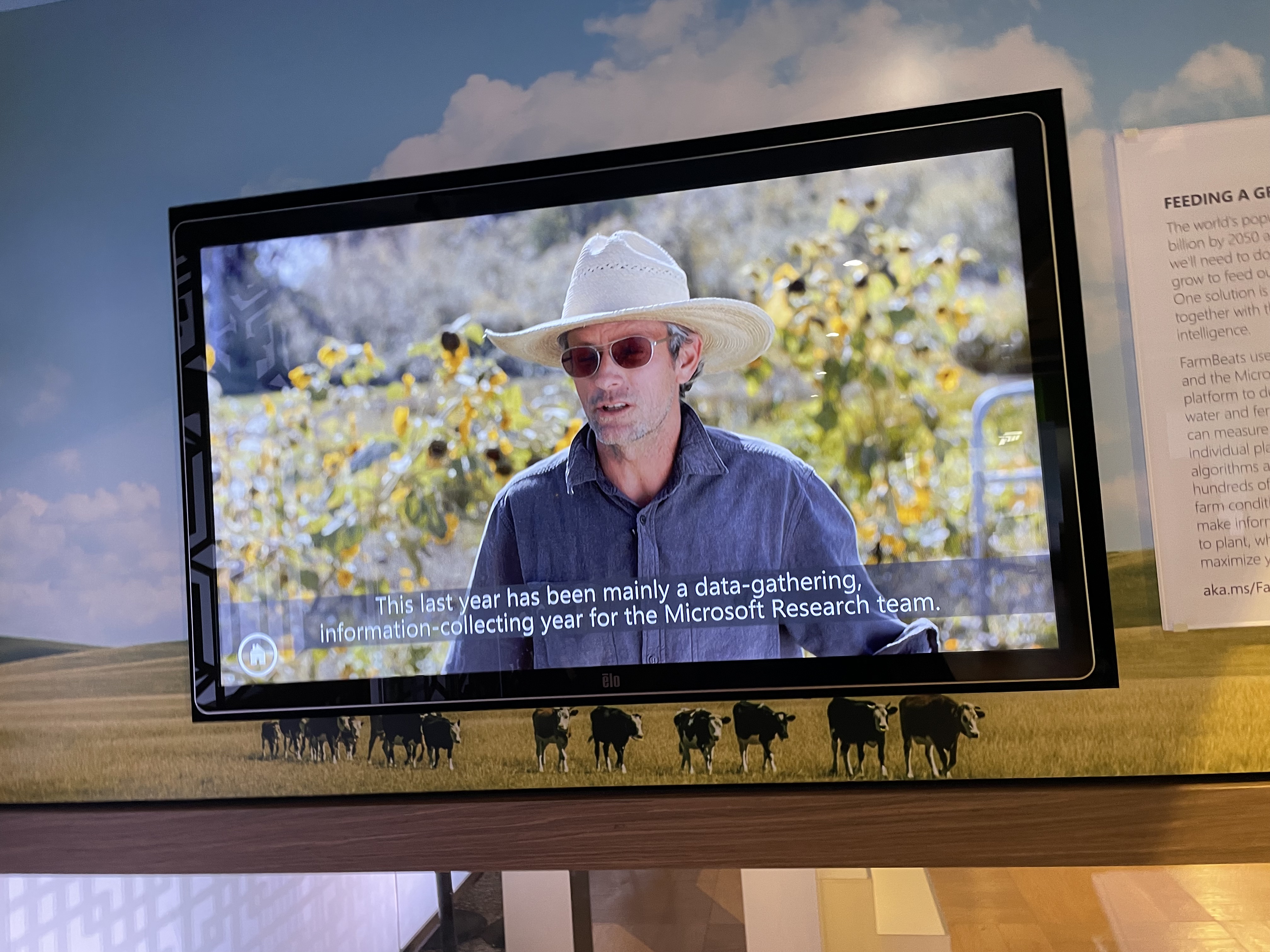
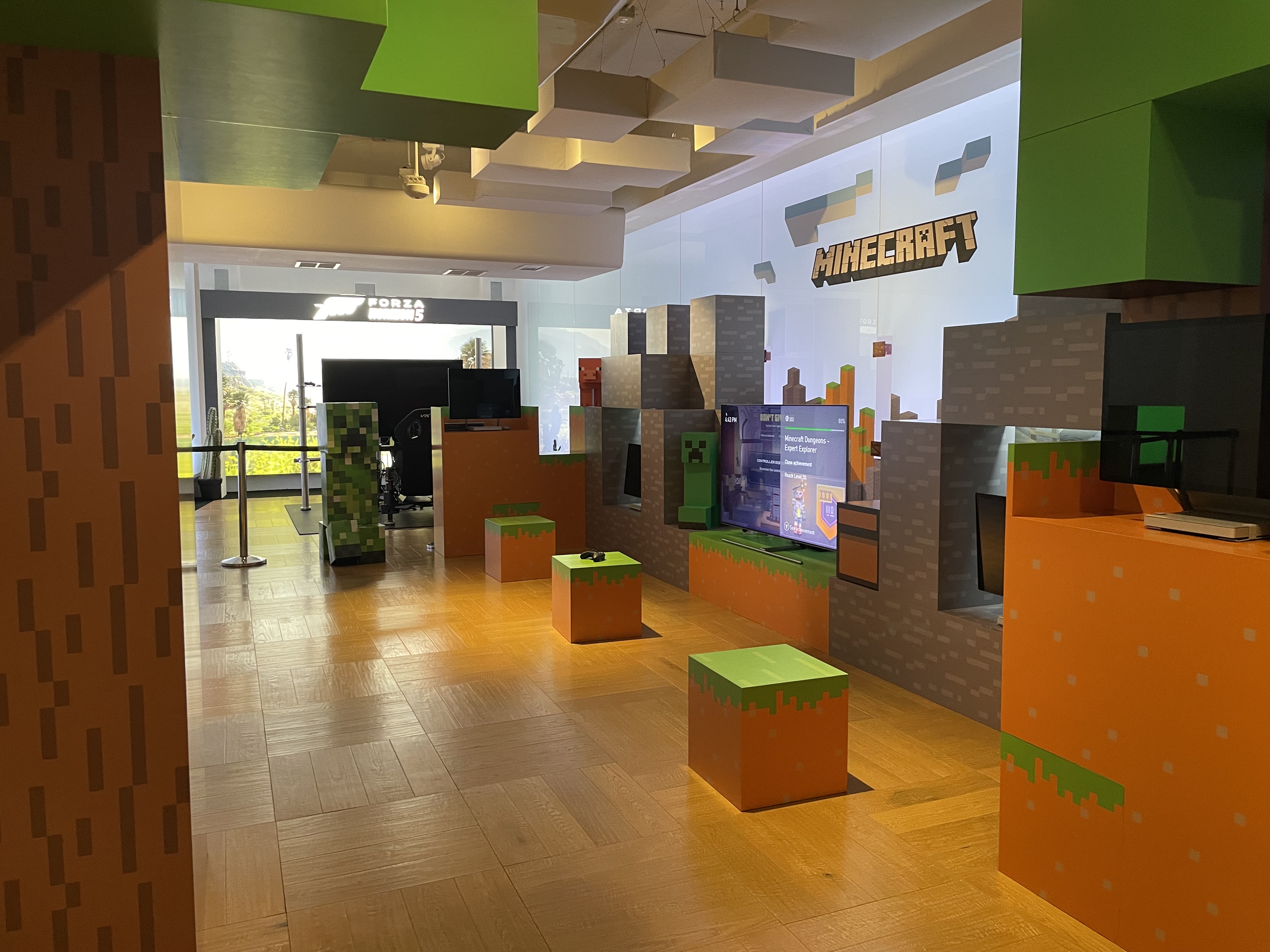 A minecraft display area.
A minecraft display area.
Finally, I visited the company store. there was lots of technology and clothing for sale. visiting business people milled around looking for gifts to bring home. I noticed this display and was surprised to see the “indigenous” t-shirt, are there really so many indigenous people connecting with microsoft to merit making such a shirt. even if it was only a few, it was a welcome surprise and hinted again at microsoft’s scale.
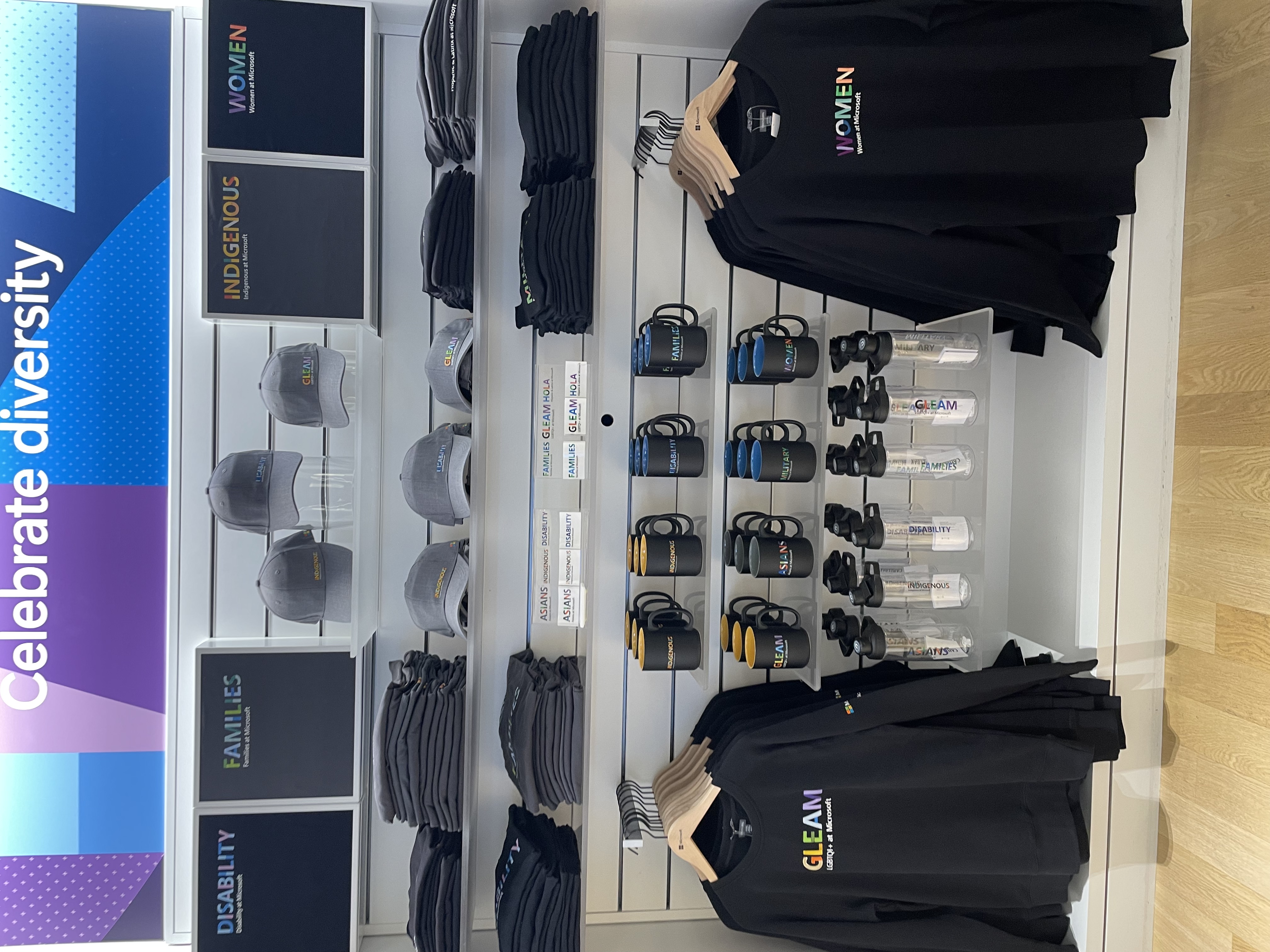 I then ventured back outside to explore the campus.
I then ventured back outside to explore the campus.
 A corporate office building. It felt prototypical of the Microsoft buildings, sprawling and low (4 stories).
A corporate office building. It felt prototypical of the Microsoft buildings, sprawling and low (4 stories).
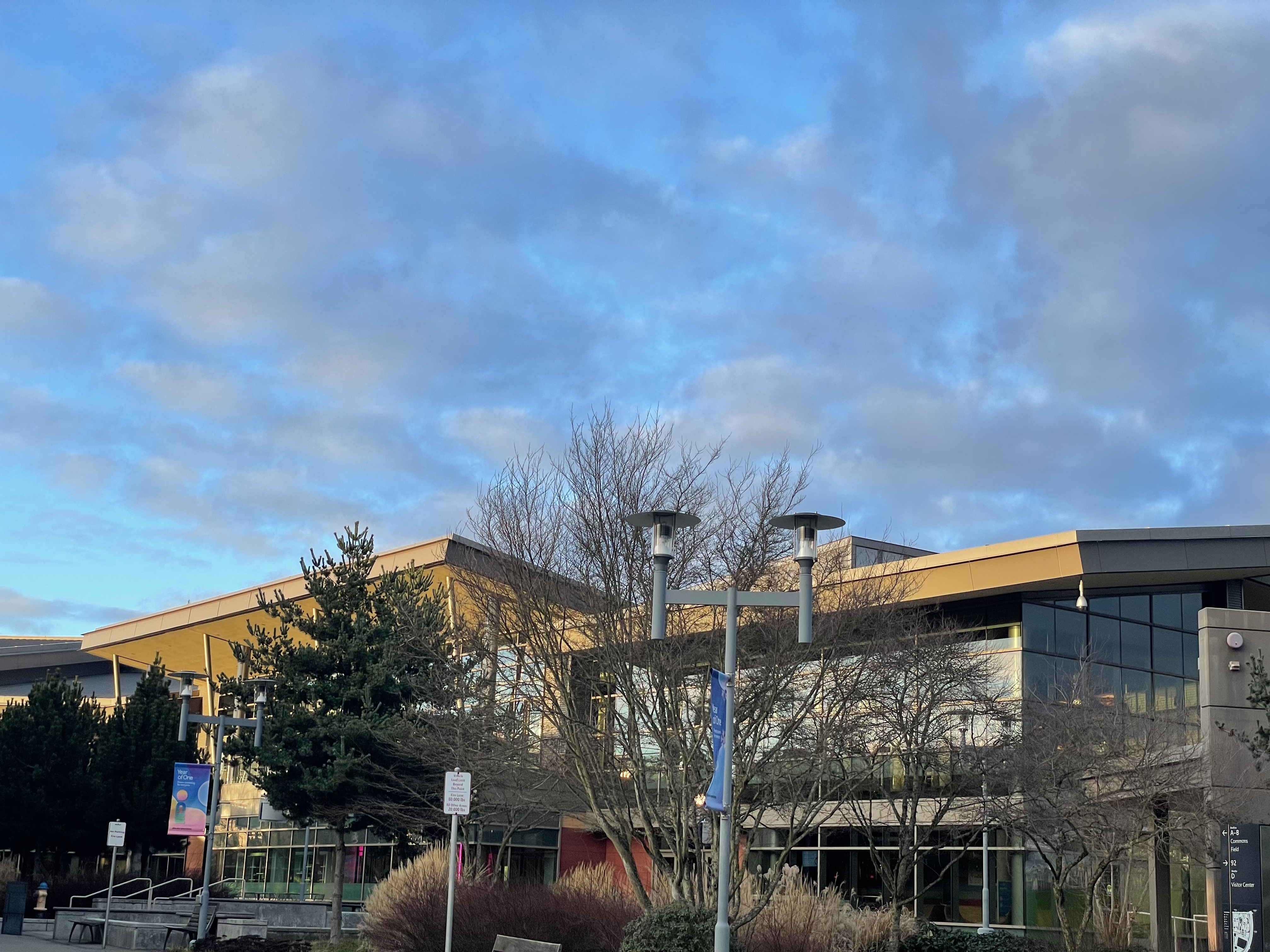 A microsoft building. I believe it might be the “Mixer.”
A microsoft building. I believe it might be the “Mixer.”
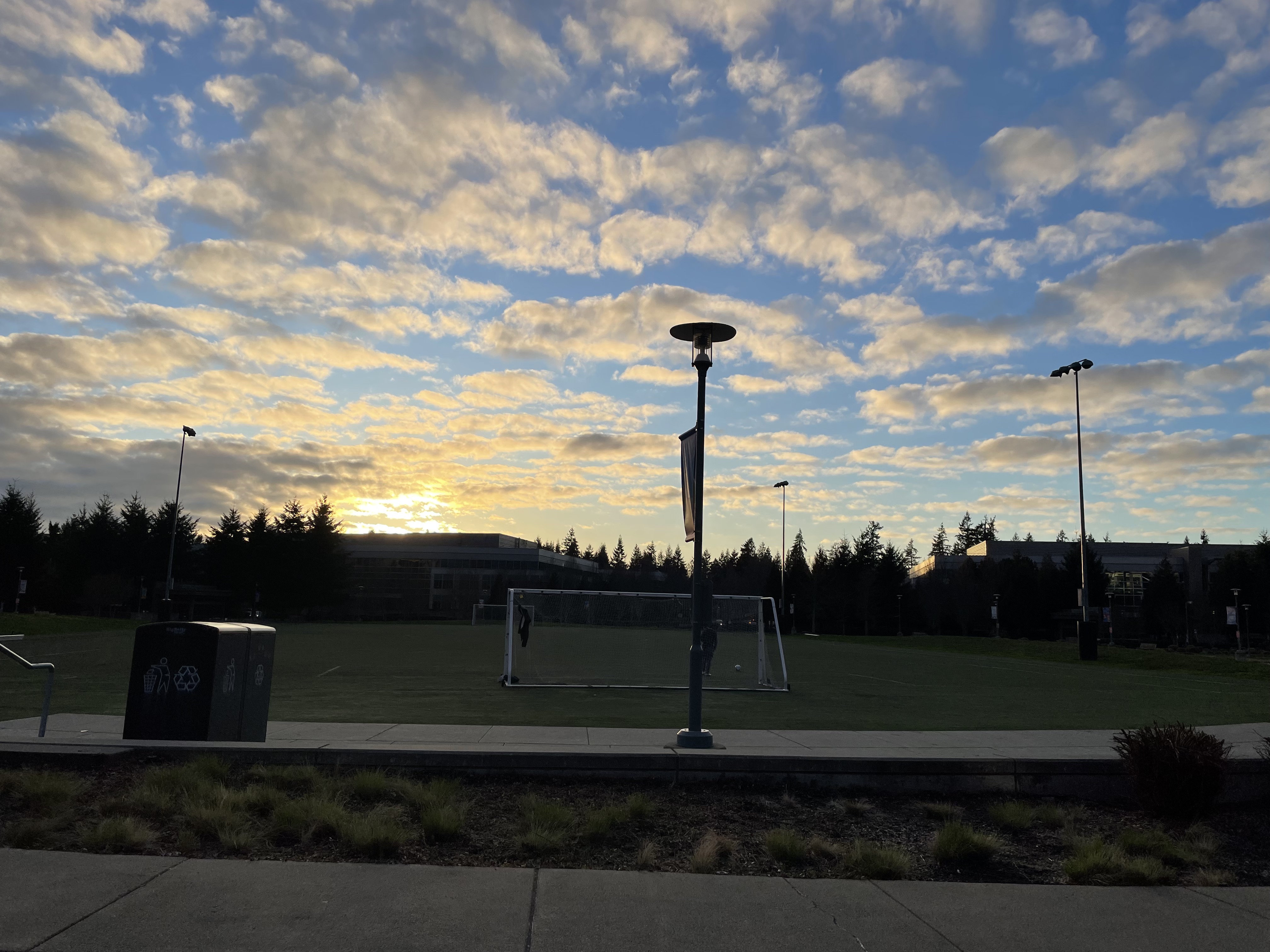 Microsoft’s soccer pitches. One lone player was on the street playing with a ball. Pine trees and more msft buildings loom in the distance.
Microsoft’s soccer pitches. One lone player was on the street playing with a ball. Pine trees and more msft buildings loom in the distance.